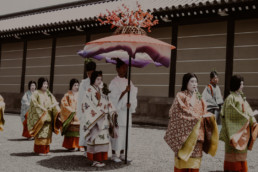Japan Tradition: Sanja Matsuri
photo credits: Yoshikazu TAKADA
The festival of the three temples
The Sanja Matsuri (三社祭) is one of the most famous festivals, largest and "wildest" festivals in Tokyo dedicated to the Shinto religion. The festival is held in honor of Hinokuma Hamanari, Hinokuma Takenari and Hajino Nakatomo, the three men who founded the Sensō-ji temple.
The Sanja Matsuri is held on the third weekend of May at the Asakusa temple and the sumptuous parade involves three mikoshi (portable temples), dances, traditional music and lasts about three days.
Like most Japanese festivals, the Sanja matsuri is also a religious celebration dedicated to the spirits of the three men, founders of the temple. This festival seems to have been born in the 7th century and is also known as "Kannon Matsuri" and "Asakusa Matsuri" and with a different shape than today.
The modalities in which today's Sanja Matsuri is organized were established during the Edo period when in 1649 the shogun Tokugawa Iemitsu commissioned the construction of the Asakusa temple.
If you happen to be around Asakusa during the festival days, you can feel an atmosphere full of energy. People flock to the streets surrounding the Sensō-ji temple to the sound of flutes, whistles and taiko (traditional Japanese percussion).


photo credits: Atsushi Ebara, Yoshikazu TAKADA
The Mikoshi
The main attraction of this festival is the three mokoshi belonging to the Asakusa temple. These three elaborate temples in black lacquered wood have the function of being a miniature and a portable version of the Asakusa Temple. Decorated with sculptures and golden leaves, they weigh about a ton and are transported by long poles held together by ropes. For each mikoshi there is a need for about 40 people for safe transport and during the day, around 500 people participate in the transport of each temple.
The "parade" of these mikoshi is perhaps the most important moment of the day and the streets are crowded as they pass. As they are also transported, they are agitated and made to bounce strongly, because it is said that this leads to intensifying the power of the Kami inside and that it helps to increase luck in the respective neighborhoods.
While the three main mikoshi are the most important objects in the streets during the Sanja Matsuri, there are about 100 other smaller mikoshi scattered in the neighborhood on Saturday. Many of these temples are also transported by women or children.

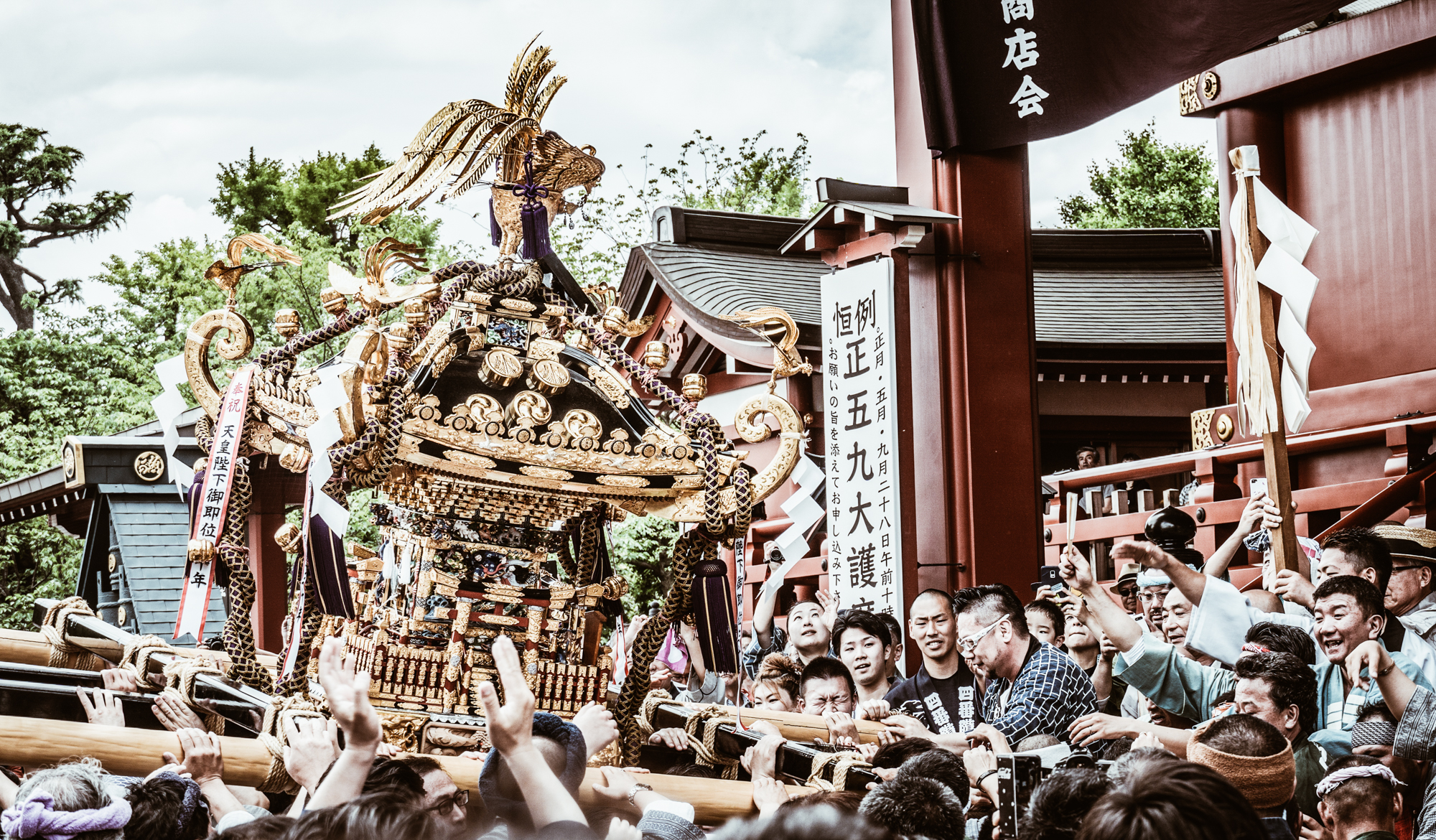
Day after day
The Sanja matsuri, is a festival that lasts several days and begins on Thursday with an important religious ceremony. This function requires the priest responsible for the temple to perform a ritual that makes the Kami of the three founders of the temple move from within into the three mikoshi. The latter will then be the protagonists of the parade that will last all weekend in Asakusa.
By opening the three small doors of the mikoshi the three spirits are invited to enter the miniature temples where they will stay for the duration of the festival. The interior of these mikoshi is also concealed from the public by a thin cotton curtain.

photo credits: Yoshikazu TAKADA
But the actual parade begins on Friday, known as Daigyōretsu (大 行列) which literally means "great parade".
The famous procession goes down via Yanagi Street and continues to the Nakamise-dōri up to the Asakusa temple. This festival is also well known for the sumptuous costumes of the participants, but also for the geishas and city officials who wear hakama, traditional Japanese clothes.
In the evening, six mikoshi from the most central neighborhoods are sent in procession on the shoulders of several dozen people.


photo credits: Hong Seongwan, Yoshikazu TAKADA
The following day, Saturday, about 100 mikoshi belonging to the 44 districts of Asakusa gather at the Kaminarimon and then leave on parade via the Nakamise-dōri in the direction of Hōzōmon. Once here they pay their respects to Kannon, the goddess of Mercy. Later, the mikoshi are taken to the Asakusa temple where the Shinto priest blesses them and purifies them for the coming year. Once the ceremony is completed, these small portable temples are transported back to their respective neighborhoods.
However, the most important event of the Sanja Matsuri takes place on Sunday. It is in this day in fact that we can see the parade of the three mikoshi belonging to the Asakusa Shrine. They march along the Nakamise-dōri to arrive at the Kaminarimon on Sunday morning. These three mikoshi enclose the three spirits of the three founding men of the Sensō-ji temple and, during the final day of this festival, they come to visit and bring blessings to the 44 districts of Asakusa.
When evening arrives, the three mikoshi find their way back to the Asakusa temple creating another great procession that lasts until late at night.


photo credits: ageless foto, Yoshikazu TAKADA
Yakuza Show
This festival of monumental size, also allows to mix fringes of the population that usually remain very detached. It is indeed common to find the Yakuza performing in fundoshi, without shame or fear, proudly showing their tattoos. In the eyes of a westerner, not accustomed to Japanese culture, this could almost seem like a comic scene. However, don't dare to laugh if you don't want bad luck to hit you!


photo credits: Hong Seongwan, syasya_akemi
Japan Tradition: Kanda Matsuri
The festival held on odd-numbered years
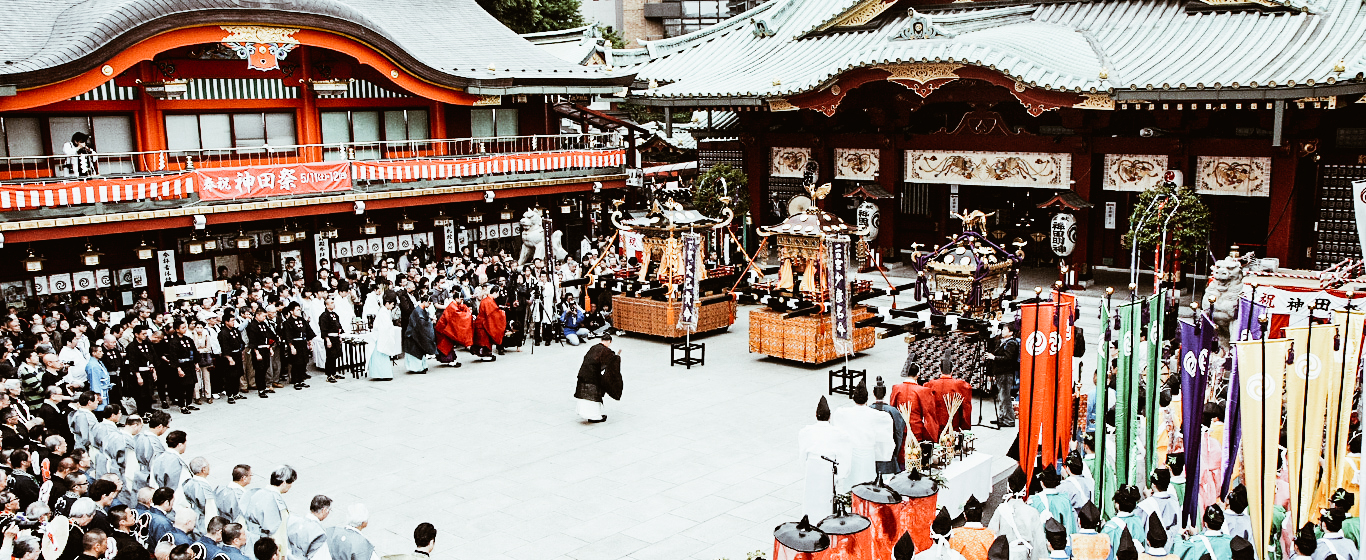
photo credits: dydo-matsuri.com
In the middle of May on every odd-numbered year, the Kanda Matsuri (神田祭) takes place in Tokyo’s Kanda. Together with the Sanno Matsuri and the Fukagawa Matsuri, Kanda Matsuri is one of the three most important Shinto festivals being held in Tokyo. It is also one of the three largest festivals of Japan together with Osaka’s Tenjin Matsuri and Kyoto’s Gion Matsuri.
The origin of Kanda Matsuri dates back to the Edo Period (1603-1867), when the shogun Tokugawa Ieyasu ruled over Edo, now modern day Tokyo. It is for this reason that Kanda Matsuri is also sometimes known as Tenka Matsuri (Tenka meaning shogun).
The celebration of this festival also doubled as a demonstration of prosperity under the new regime.


photo credits: xin beitou, Atsushi Ebara
At the same time, the Sanno Matsuri took place to celebrate the new political center and its rulers. Because of the long and extravagant preparations, competition between the two festivals grew, and eventually, it was decided to celebrate them in alternate years. Under this new rule, Kanda Matsuri was to be celebrated in the middle of May on odd numbered years , while the Sanno Matsuri would be celebrated in the middle of June on even numbered years.
Today, Kanda Matsuri is celebrated in honour of the gods residing in the Shinto shrine called Kanda Myojin that can be found nestled among modern buildings in one of the most exclusive neighbourhoods in Tokyo, Chiyoda ward. The shrine is dedicated to 3 deities: Daikokuten, the god of good harvest and matrimony, Ebisu, the god of fishermen and businessmen and Taira no Masakado, a revered samurai of the 10th century who was deified.

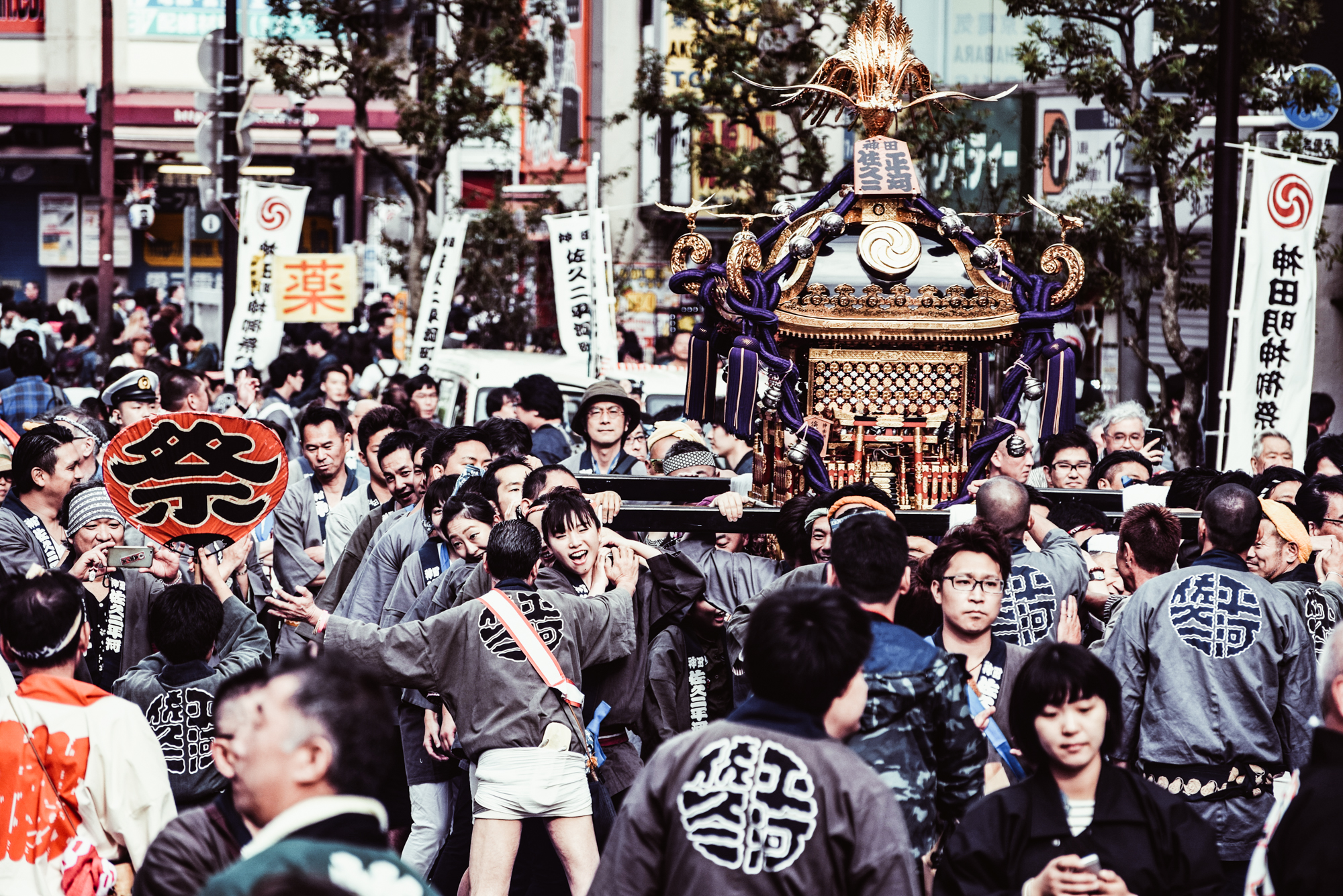
photo credits: rove.me, bill ben
Celebrating prosperity and good fortune
Like most other festivals, shinto rites are an essential part of the preparations. On the eve of the main procession, the kami (gods) of the shrine are invited to enter the three finely decorated mikoshi (portable shrines) through these rituals. At 8 a.m. on the day of the festival, these mikoshi are paraded through the streets of Kanda, continuing down to Nihonbashi, followed by Otemachi, and finally Akihabara, before returning to the temple at around 7 p.m. This procession is typically accompanied by an immense crowd of people, along with musicians, priests riding on horseback and many other participants wearing colorful, traditional clothes.
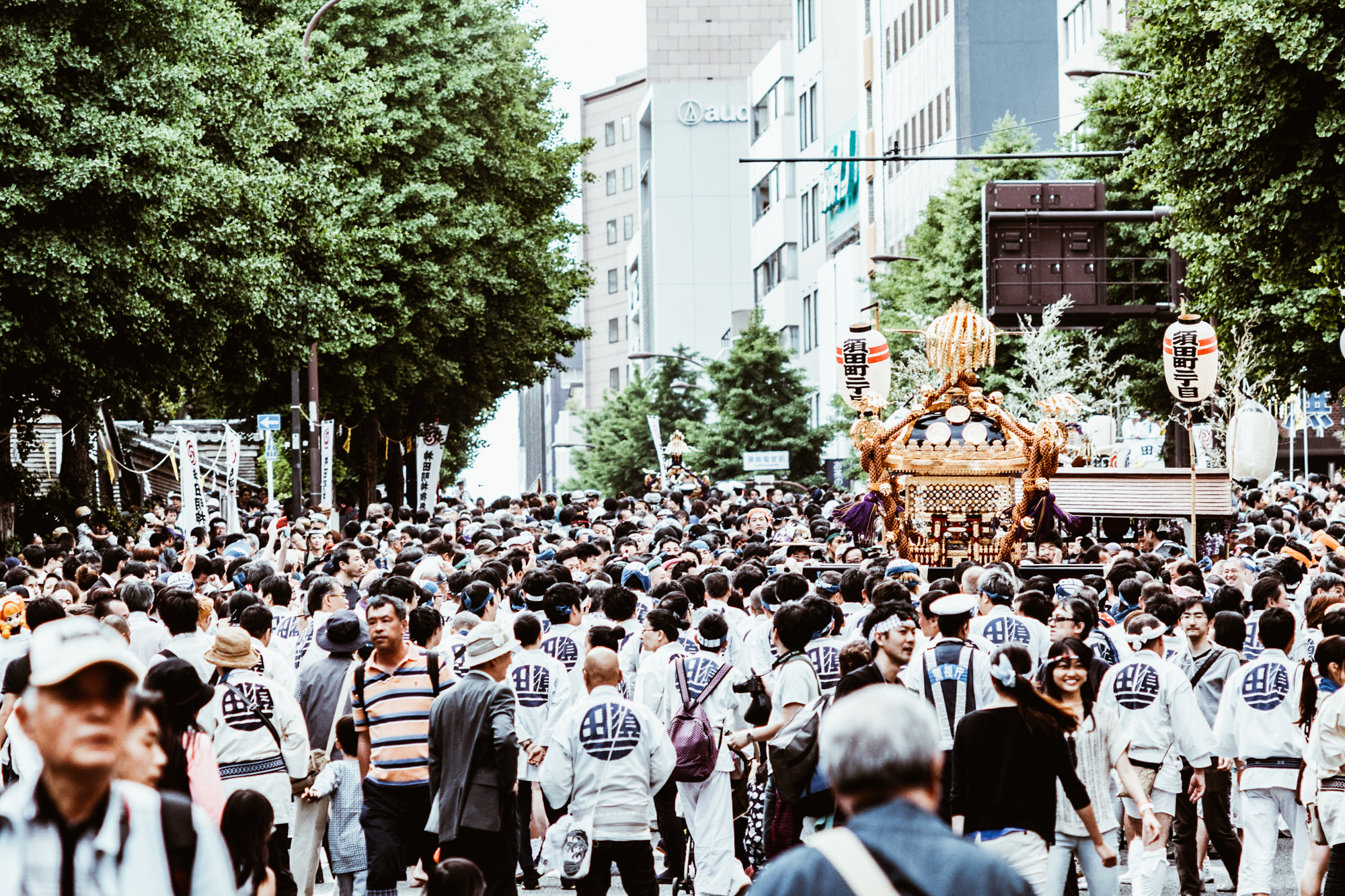

photo credits: nlgwest , Kemy Shibata
At the same time, there is a smaller three-hour long secondary procession being held. This is attended by men on horseback dressed as samurai, characters from folk stories, musicians, and dancers who depart from Arima Elementary School in the early afternoon and proceed north towards the Kanda Myojin shrine.
The next day following the festival is dedicated to the procession of mikoshi from various neighbourhoods in the Kanda and Nihonbashi district. Each of them contains an ujigami, guardian deities who, on this occasion, are housed in mikoshi to bless the residents of the area as they are paraded through the streets.

photo credits: Eugene Kaspersky
Many small curiosities
Those who were born and raised in Edo were called “Edokko”. Edokko had a peculiar personality and they were said to be very open and cheerful people. All these characteristics were, and still are, reflected in the Kanda Matsuri, a festival full of energy.
The procession with all its main elements also recalls the celebrations for Tokugawa's victory in the battle of Sekigahara, which cleared the path to the shogunate that led to a long period of peace and prosperity in Japan. Originally, townspeople would dress up and give thanks to the shrine through lavish performances of Noh theater.

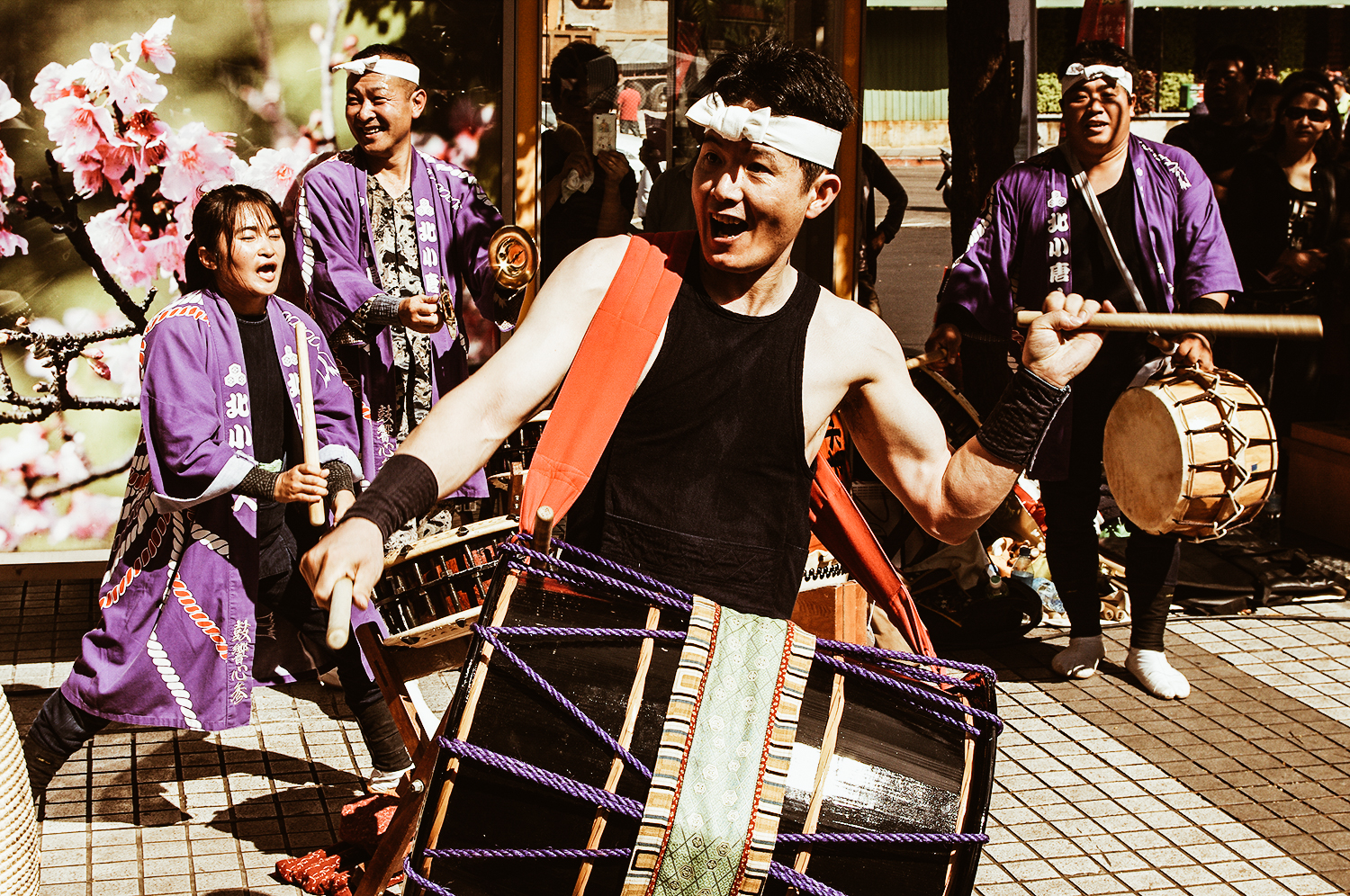
photo credits: tokyoexcess.blogspot.it, xin beitou
During the Edo period, the parade with its beautiful decorations would pass by Edo Castle, giving common people a rare chance to enter its grounds.
Most of the original floats, which had been used since the early days of the festival, were destroyed in the Great Kanto Earthquake of 1923 and in the bombing of WWII.


photo credits: viajejet.com, fastjapan.com
Japan Tradition: Aoi Matsuri
The Hollyhock Festival
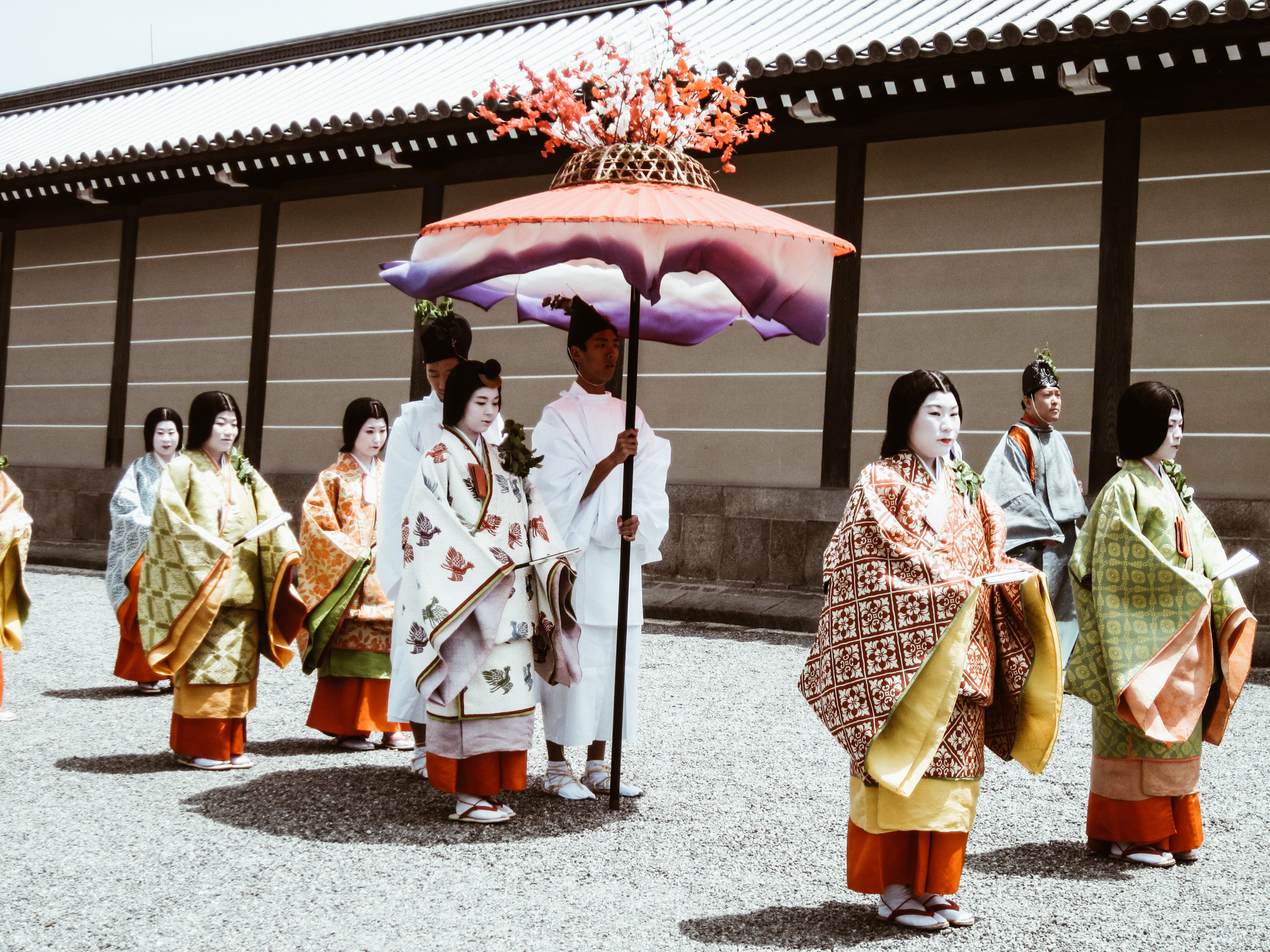
photo credits: mutabi.wordpress.com
One of Kyoto’s three most well-known festivals, Aoi Matsuri (葵祭) takes place every year on the 15th of May. The name of this festival derives from the hollyhock leaves that participants in the festival’s parade carry with them as they walk down the designated route. In Japanese, “Aoi” (葵) refers to the “alcea rosea” or, as the namesake of this festival, the “hollyhock”. This plant produces brilliant colours and beautiful flowers, and its leaves are believed to have the power to prevent natural disasters.
The main attraction of this festival is a grand parade that involves more than 500 people dressing up in the aristocratic styles of the Heian period (794 - 1185 CE).
This annual parade starts from the Imperial Palace, and the participants will walk down the road until they arrive at Kamo Shrine. This name refers to the shinto sanctuary complex that consists of Kamigamo shrine and Shimogamo shrine.


photo credits: amanohashidate.jp, Nobuhiro Suhara
The Origins
The festival first started during the reign of Emperor Kinmei (539 - 571CE), when a period of heavy rains ruined the harvest and an epidemic spread through the country.
It was believed that these tragedies came about because the Kamo deities wanted to punish the people. Thus, the emperor sent a messenger to the temple with offerings and to perform various rituals in order to appease these deities. Part of these rituals also required the riding of a galloping horse.


photo credit: Alex Hurst, Clement Koh
This became an annual event with the intention of preventing further disasters. However, during the reign of Emperor Monmu (697 - 707CE), it was suspended due to the huge amount of people joining to watch the rituals. In the 19° century, Emperor Kanmu established the seat of the imperial throne in Kyoto and this represented the beginning of the Heian period in Japanese history. The emperor recognised the Kamo deities as protectors of the capital and reestablished the Aoi Matsuri as an annual imperial event. The festival was sometimes discontinued in some periods of Japanese history, especially during World War II, but it was actively resumed in 1953. The Saiō-Dai tradition in this festival was also initiated in 1956.
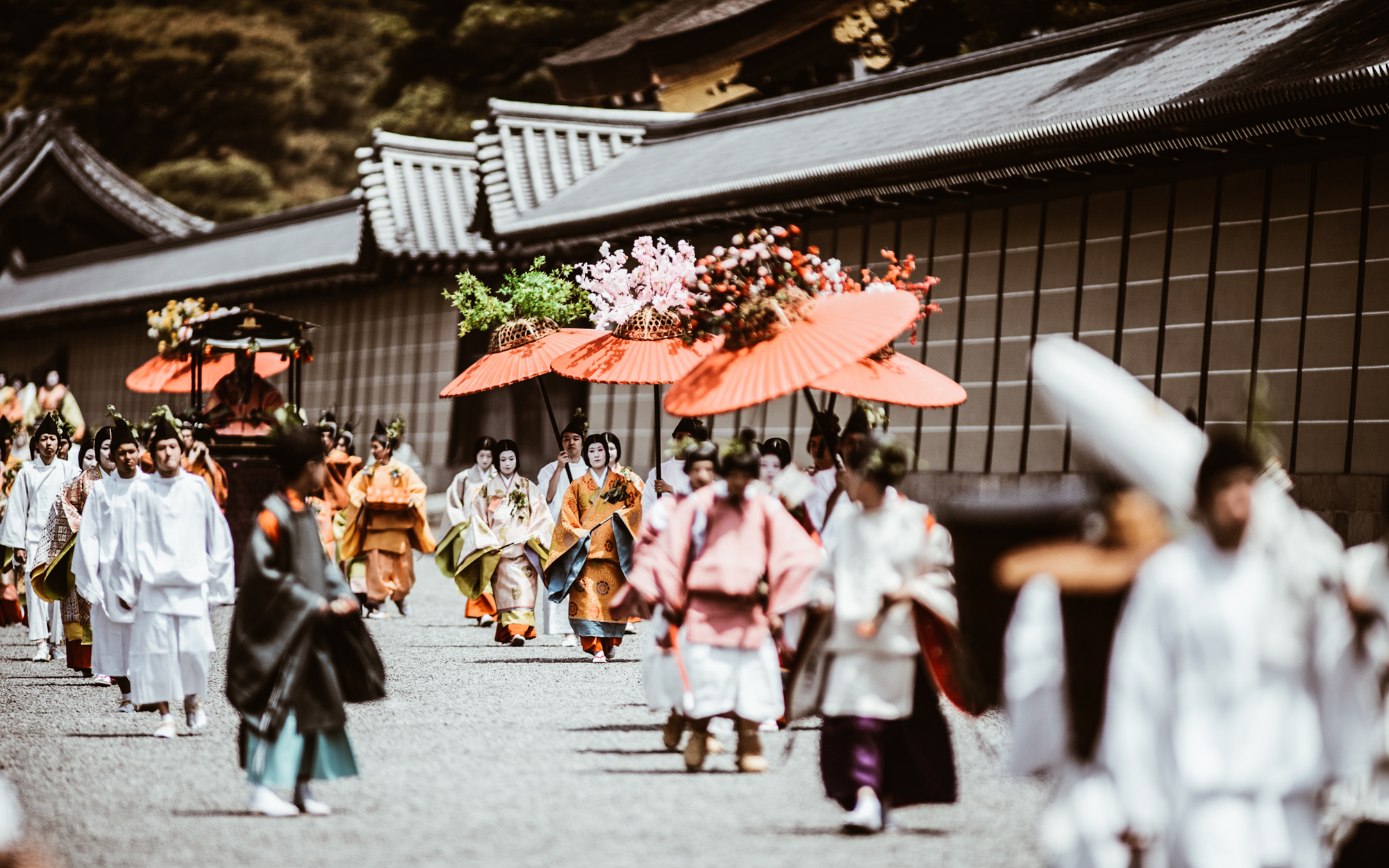
photo credits: regex.info
The characters of the Festival
There are two main characters in the Aoi Matsuri: the Saiō-Dai and the Imperial Messenger.
The Saiō-Dai is a woman chosen from the sisters and daughters of the emperor to dedicate herself to the Shimogamo Shrine. The role of the Saiō-Dai is to maintain spiritual purity and represent the Emperor at the festival. Today the Saiō-Dai is chosen from all unmarried women of Kyoto. She wears twelve layers of silk robes (jūnihitoe), finely colored in the traditional style of the Heian court. To maintain ritual purity the Saiō-Dai has to go through several ceremonies of purification before the festival’s parade.
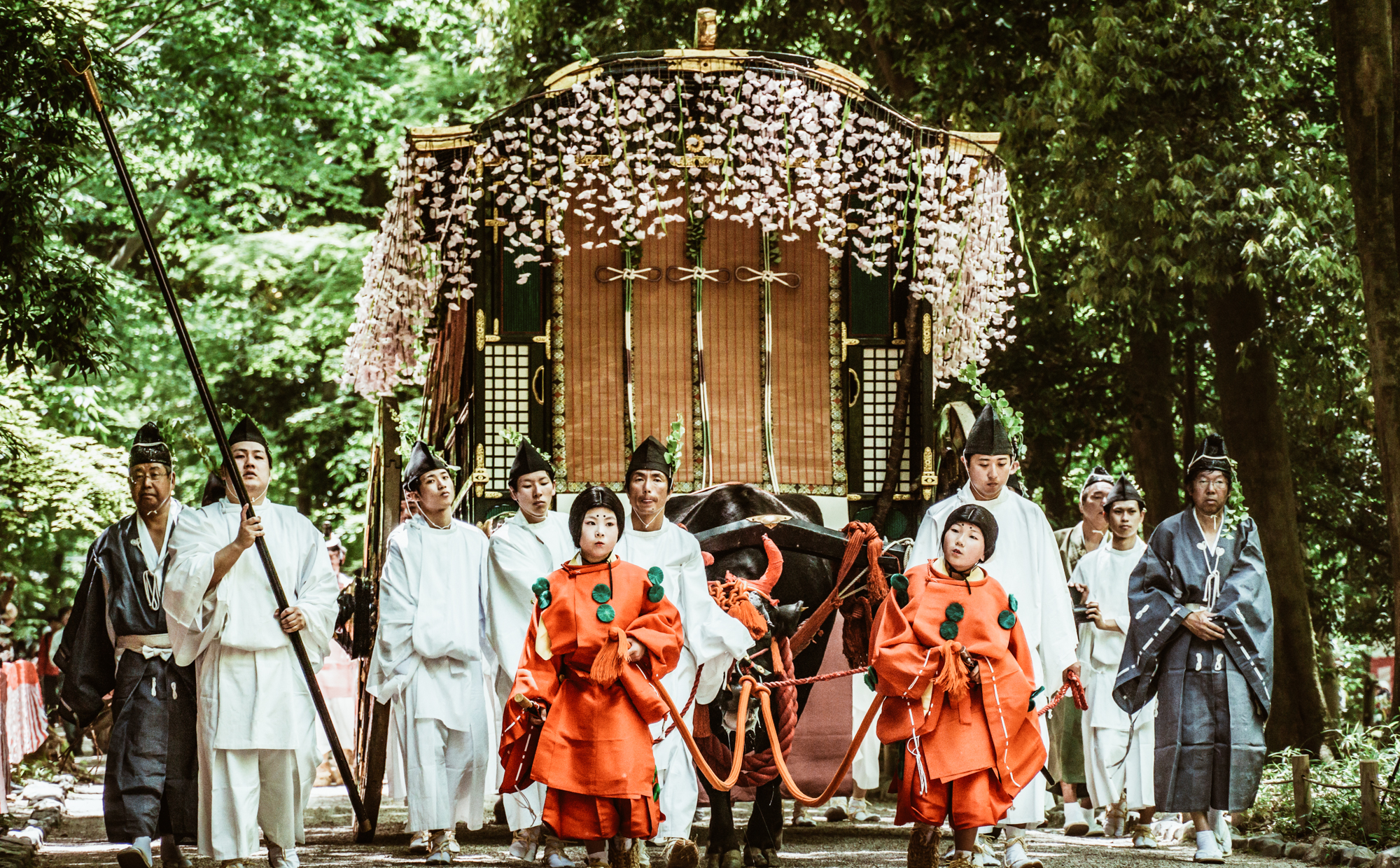

photo credit: Hong Seongwan
The Imperial Messenger, on the other hand, conducts the procession of the festival by riding a horse. During the Heian period, he would be a Fifth-Rank courtier holding office of middle or lesser capitan. He was also typically a man destined for high office. His role was to read the imperial edict and present the emperor’s offerings. During the Heian period, the Saiō-Dai and the Imperial Messenger would be accompanied by ten dancers and twelve musicians.

photo credits: Hisanori
Celebrations Today
The parade starts at 10:30 a.m. on May 15th at Kyoto’s Imperial Palace. It then slowly departs for two important stops: the Shimogamo Shrine, where the procession should arrive at 11:15 a.m., and the Kamigamo Shrine, where they will arrive at 3:30 p.m. The Saiō-Dai and the Imperial Messenger perform their rituals at these stops. The Saiō-Dai pays her respects to the deities, while the Imperial Messenger intones the imperial rescript, praising the deities and requesting their continued favor.


photo credits: Slugicide, find-your-jpn.com
Japan Travel: Character Cafes
Japan is the richest land when it’s about magical places, in every sense! Even stopping for a snack can become a unique experience when you immerse yourself in a fantasy world like that of the "Character Cafes" scattered throughout the territory. What are these places? Particular types of themed cafes that allow customers fond of comics and animation to savor incredible kawaii dishes in a room totally inspired by a specific character.
There are temporary concept cafes that open about every two months, but fortunately, there are also permanent ones and they are a fundamental step for anyone who wants a bit of sweetness.
Fantastic Character Cafes and where to find them
PomPomPurin Café


photo credits: dangonews.com, straitstimes.com
Entering the PomPomPurin Café is like entering the room of this sweet big dog, a famous Sanrio character. You are welcomed by the yellow and brown of the furnishings, a quiet and relaxing place where you can enjoy sweets, drinks and specialties of various kinds. Inside the café there are "photo corners", dedicated points to take a picture with your favorite pudding! There are also limited edition goods that can only be purchased at the in-house shop.
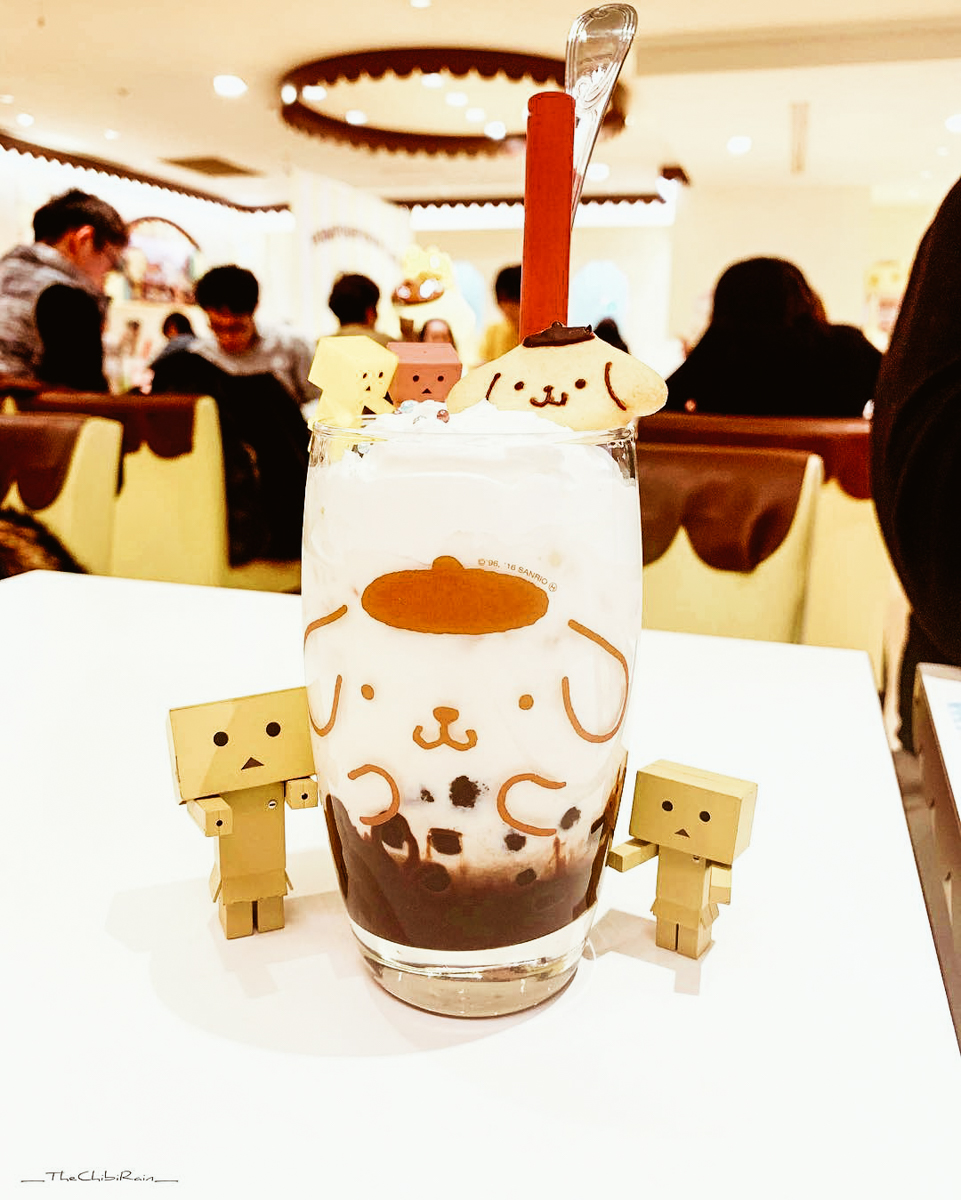


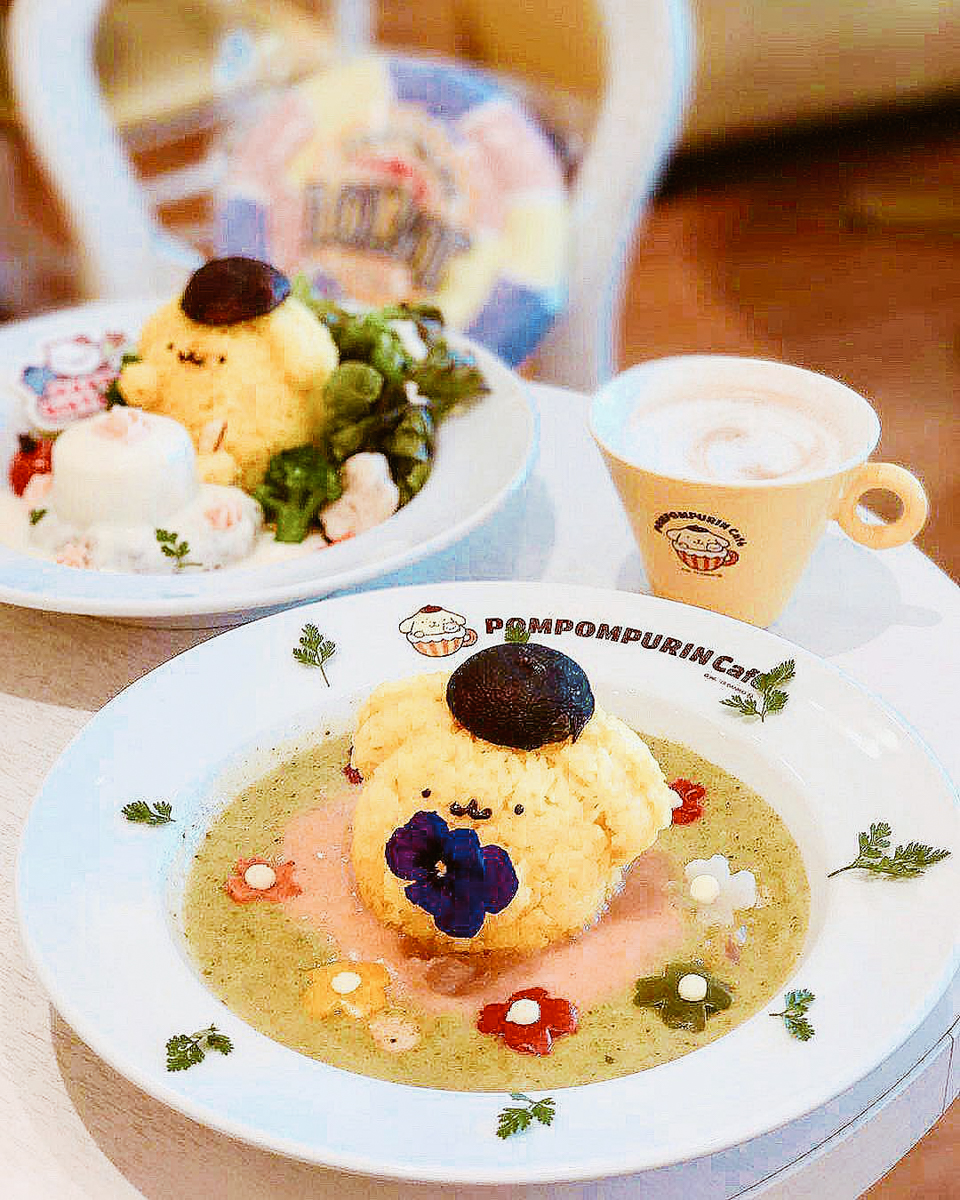
photo credits: thechibirain, littlemomiji, klawsbykatya, xxakira0412xx
Official Website: http://pompom.createrestaurants.com/jp/
Address:
TOKYO: 〒150-0001 Shibuya, 1-7-1 Jingumae, CUTE CUBE HARAJUKU 3F
OSAKA: 〒530-0012 Kita, Shibata, 1−1−3 Hankyu Third Avenue South Building
NAGOYA: 3 丁目-32-6 Sakae, Naka Ward, Aichi Prefecture 460-0008
YOKOHAMA: Yokohama City Nishi-ku 2-1-5. YOKOHAMA SOTETSU SQUARE
Final Fantasy Eorzea Café

photo credit: favy-jp.com
Final Fantasy Eorzea Café is a small sanctuary for all fans of the famous Square Enix game FFXIV. Eorzea takes its name from the region where the video game takes place. Its interiors are beautifully decorated and the café in Akihabara also has a bar where you can order alcoholic beverages.
The food and drinks served at the bar are constantly changing, just like in the game! By ordering different drinks you can receive a collector's coaster and the restaurant has a point collection system with which special goods can be won, in addition to those that can be purchased at the dedicated sales corner.
Reservations must be made at least two hours in advance if you wish to find a place in this space.

photo credit:japantravel.com
Official Website: https://www.pasela.co.jp/paselabo_shop/ff_eorzea/
Address:
TOKYO: 2F, 1-1-10 Sotokanda, Chiyoda-ku,
OSAKA: 4F Pasela Resort, 1-4-27 Dotonbori, Chuo-ku, Osaka-fu
Cinnamoroll Café

photo credit: sanrio.com
Cinnamoroll, a white puppy with long ears, blue eyes, and a curly tail, is one of the most adorable characters of the Sanrio brand. The environment of this café creates an extremely relaxing atmosphere thanks to its delicate colors and its irresistible dishes. Here it is possible to taste the Omu rice, the Stroganoff fillet, the special Shortcake and some seasonal dishes. There is also a shop with limited edition goods.

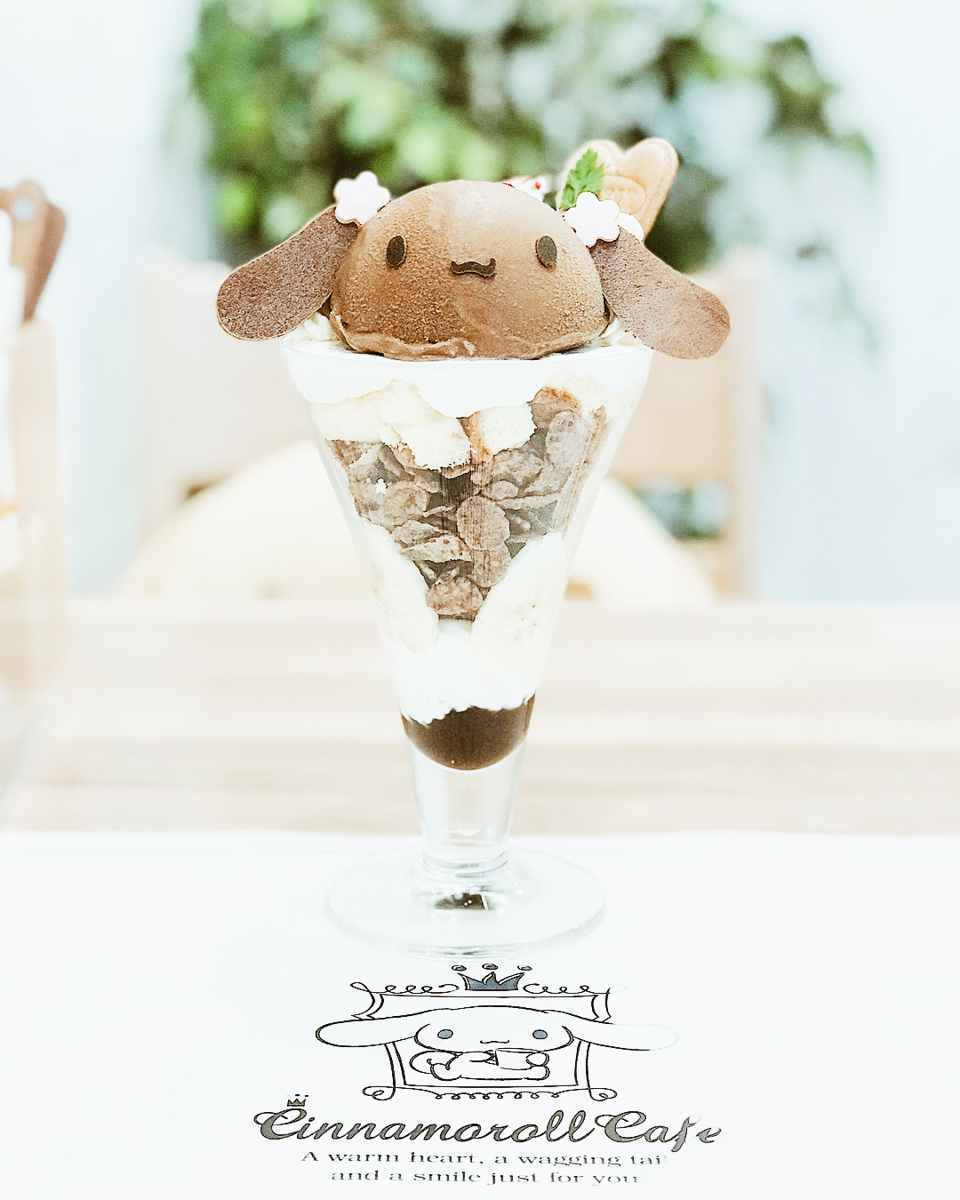

photo credit: rainbowholic, Japan Italy Bridge, rietiru
Official Website: http://www.cinnamorollcafe.com/shinjuku/
Address: Shinjuku Marui Annex 3 Chome-1-26 Shinjuku, Tokyo 160-0022
Gudetama Café

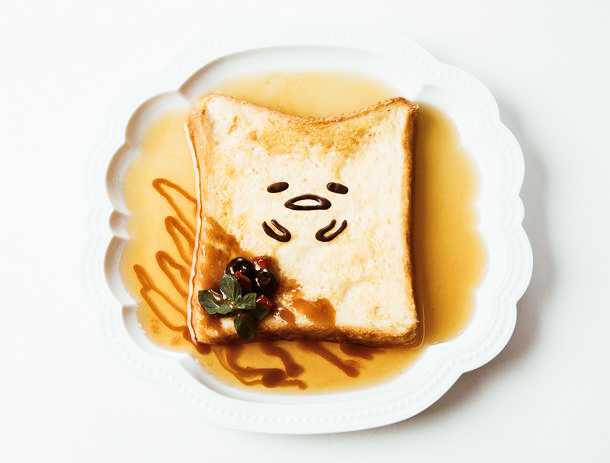
photo credits: digjapan.travel, picsunday.com
Gudetama is a lazy egg who thinks that everything is mendokusai (a pain) and never has any motivation. And he is the protagonist of the cafe located on the seventh floor of HEP FIVE, a shopping center near the Umeda station in Osaka. Recognizable thanks to its designs, this café offers an exquisitely evolving menu that reflects the lazy and unmotivated nature of its character, in an environment that combines all the shades of pastel yellow with large plush toys by Gudetama in its classic lazy poses.
Cups, magnets and gadgets of various kinds are available to be purchased to bring with you the memory of the most lethargic experience ever!


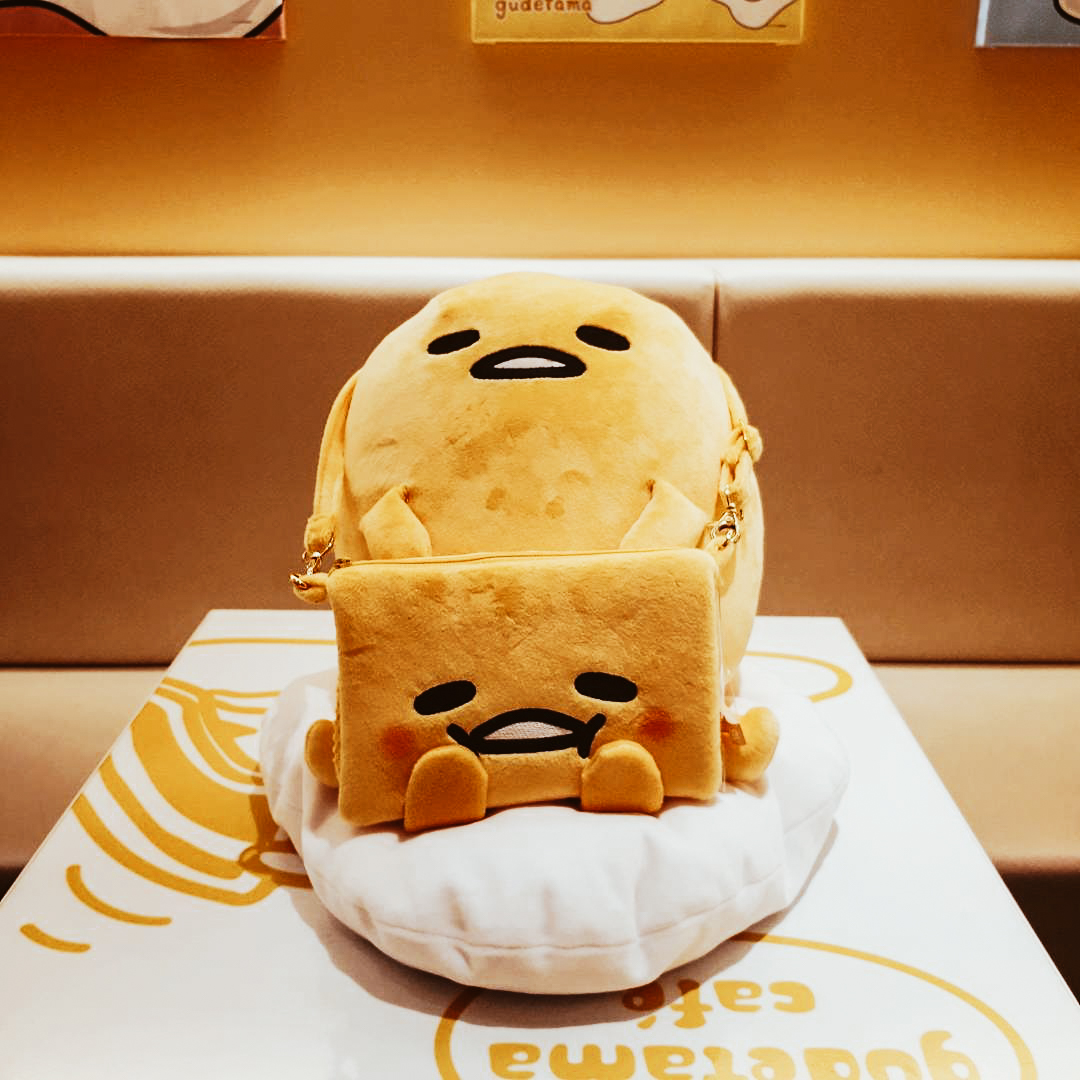
photo credits: gudetamacafe_hepfive, cafe_shirokuma
Official Website: http://gudetama.createrestaurants.com/jp/info.html
Address: 〒530-0017 Osaka, Kita-ku, Kakuda-cho 5-15, HEP FIVE 7F
Peter Rabbit Garden Cafe
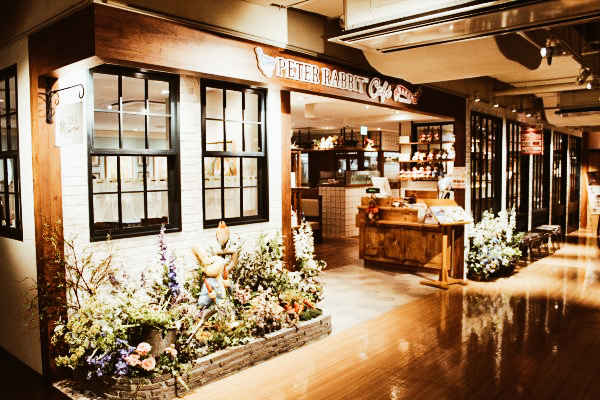

photo credits: japantravel.com, blog.we-are.com
Through the winding streets of Jiyugaoka in Tokyo, a small garden café is hidden, inspired by the stories told in the world of Beatrix Potter whose protagonist is Peter Rabbit. The atmosphere inside the cafeteria is very welcoming and inviting. The blue and white checkered tablecloths cover every table that is decorated with the author's books that you can read and draw on and, sitting next to the customers, you can find the stuffed animals. The wooden floors and furniture give warmth to the environment while various photographs are hung on the walls. On the shelves we find flowers, woven baskets, gardening tools and small objects that evoke images of the picturesque English countryside. Every dish on the menu is carefully designed and, of course, there is a small section dedicated to souvenirs if you want a small piece of sweetness to keep as a souvenir.

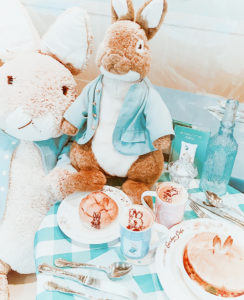

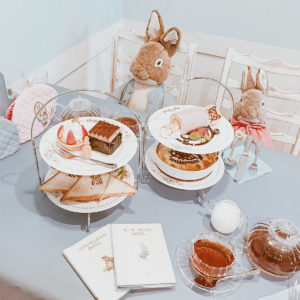
photo credit: nemui_ohirune_shitai, luv_barbie_pink, lolitandthecity, curetofficial
Official Website: http://www.peterrabbit-japan.com/cafe/
Address: 1 Chome-25-20 Jiyugaoka, 目黒区 Tokyo 152-0035
Pokémon Cafe
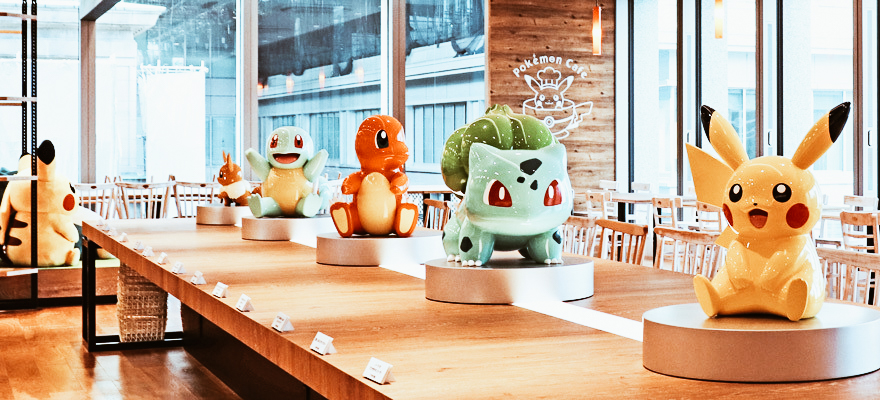

photo credit: digjapan.travel, jw-webmagazine.com
Have you ever dreamed of shouting "Gotta catch'em all!"? You may not be able to do it literally, but the most loyal fans will find joy at Pokémon Café. Opened in 2018 and associated with the Pokémon Center DX, this restaurant is spacious and bright, furnished with simplicity and minimalist decorations, with wooden floors and large tables.
As in any self-respecting character café, Pokémon-themed food and drinks are available, in addition to the seasonal menu available only for a limited period of the year. The unique gadgets always attract collectors. In fact only here is it possible to find poke-thermos, Pikachu stuffed animals in a cook version and the famous Pokéball-shaped cups! Unlike other cafes, online booking is required in advance as the seats are highly sought after.
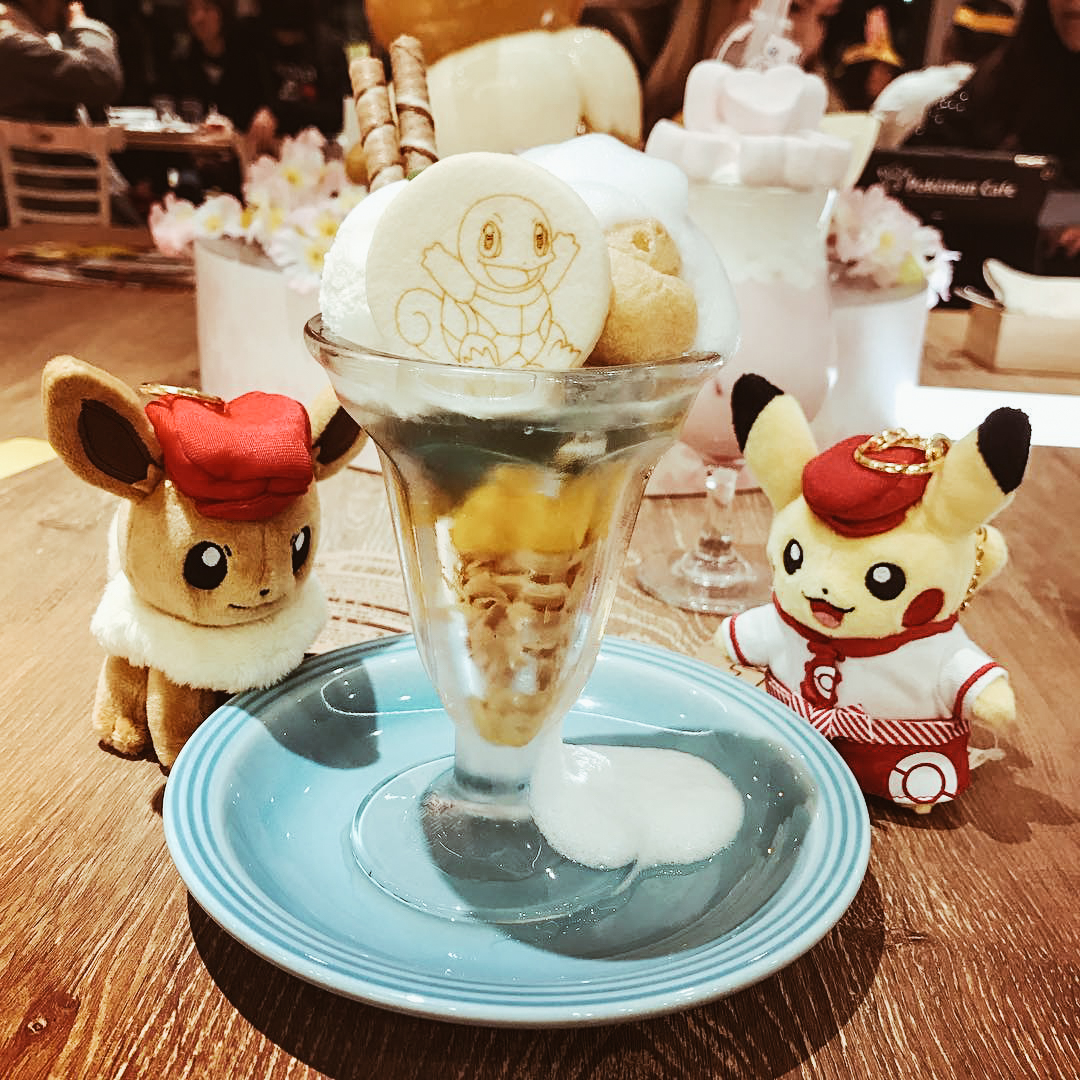


photo credit: nane0v0, xx.asu.pika.025.xx, hanrutmoe
Official Website: https://www.Pokémoncenter-online.com/cafe/
Address: 2-1-2 Nihombashi | Nihombashi Takashimaya SC East Bldg. 5F, Chuo 103-0027, Tokyo
Shiro-Hige’s Cream Puff Factory
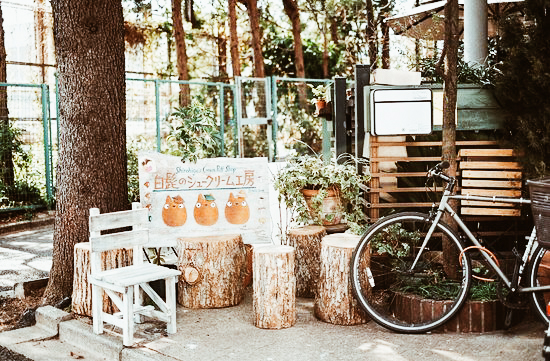

photo credit: tripadvisor.com, trip101.com
A solitary sign with 3 small painted Totoro signals the existence of this small café in the quiet neighborhood of Daita, hidden among many plants and tree trunks. Adorable puffs inspired by the famous Studio Ghibli creature are served in various flavors. From traditional vanilla and chocolate to seasonal matcha, white peach and Adzuki beans. But if your stomach demands something more, just go up to the second floor, to the Toto Café where tasty pasta dishes are served with iced coffees.
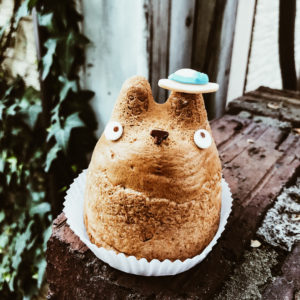


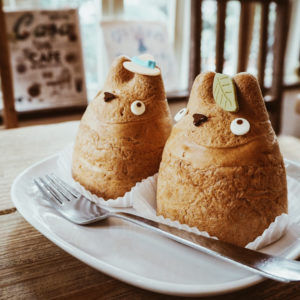
photo credit: onetheycallbela, eliseaki, cooki3zz
Official Website: http://www.shiro-hige.com/main/
Address: 5-3-1 Daita, Setagaya 155-0033, Tokyo
Shirokuma Cafe - Polar Bear’s Café

photo credit: tripzilla.com
Shirokuma-san, the big polar bear who stars in the manga written by Aloha Higa and owner of a bar that welcomes animal and human friends, is also the inspiration for this cozy café. Lots of masterfully modeled bear-and-panda shaped dishes will inspire customers to take lots of photos, captivated by their beauty and tenderness. The restaurant is cozy and guests can pose for many souvenir photos with adorable cartoon characters, while children can have fun in the corner dedicated to them, full of toys and a television! Do not miss the small shop where you can find soft stuffed animals, notebooks, t-shirts, bags, stationery and bento boxes.

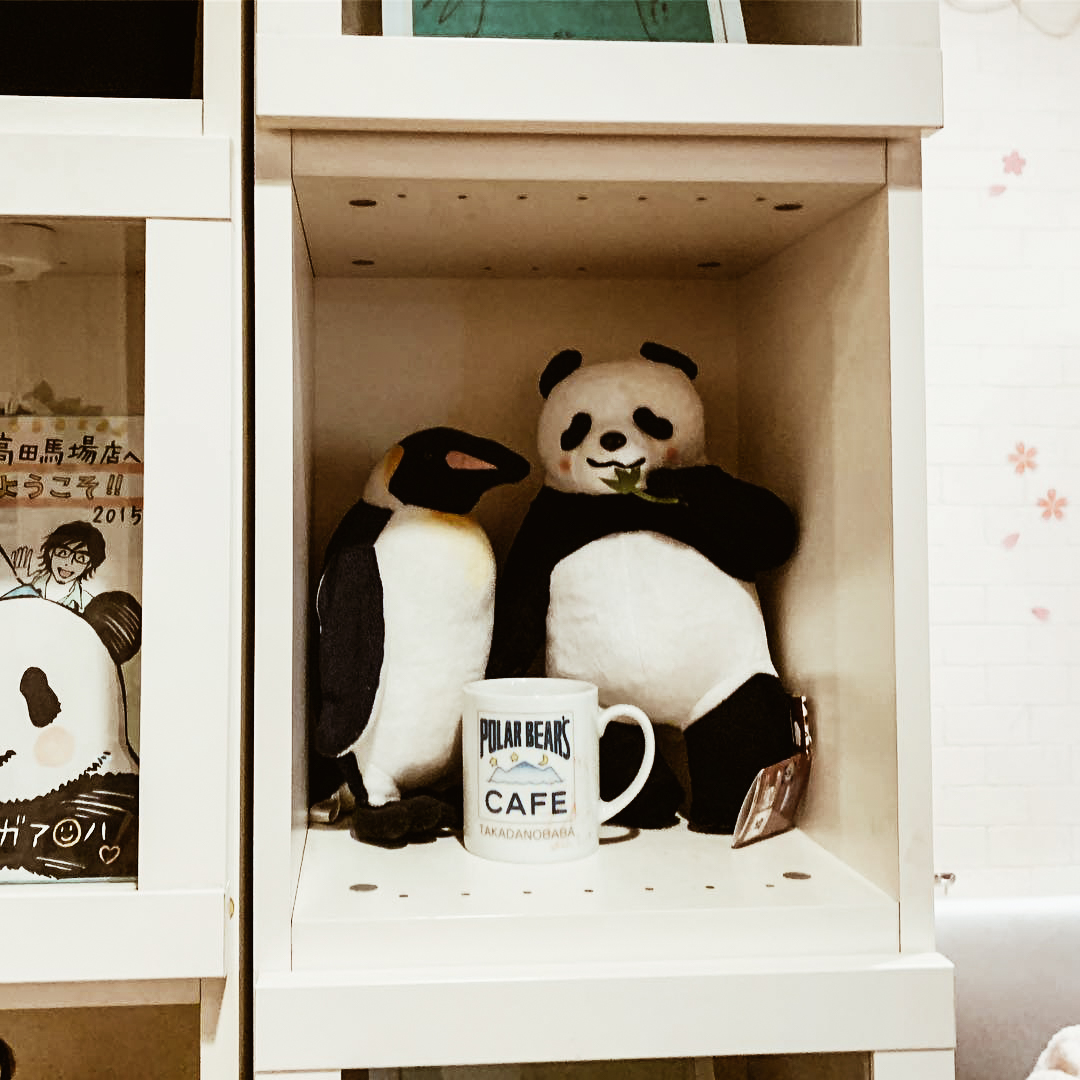
photo credit: chillintokyo.wordpress.com, airvarie
Official Website: http://www.shirokumacafe.net/.en/
Address: Tokyo-do Shinjuku-ku Takadanobaba 2-1-2 TOHMA takadanobaba 1F
Alice in Wonderland Café - Alice's Fantasy Restaurant
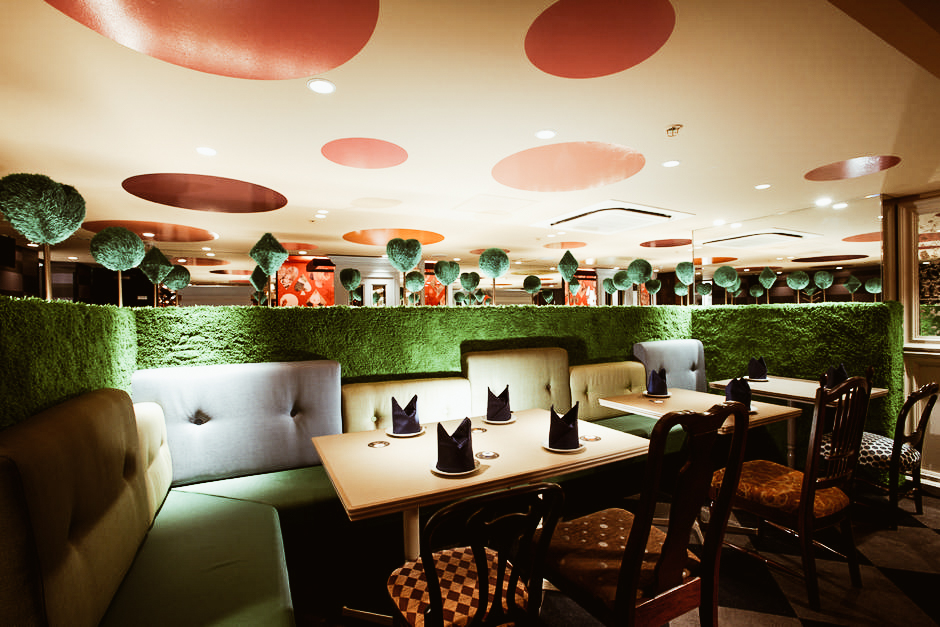

photo credit: materialicious.com, yanderette
Five restaurants inspired by the Lewis Carroll novel have permanent locations in Japan.
Each of them is extraordinarily engaging and transports visitors to the different scenarios of Alice's world. There are five themes to choose from: the maze, fantasyland, the fantastic book, the magical land, and the old castle. The menu is strictly inspired by British cuisine. To enter the wonderland it is necessary to book online or you can do it in person by going to the restaurant a few days before.
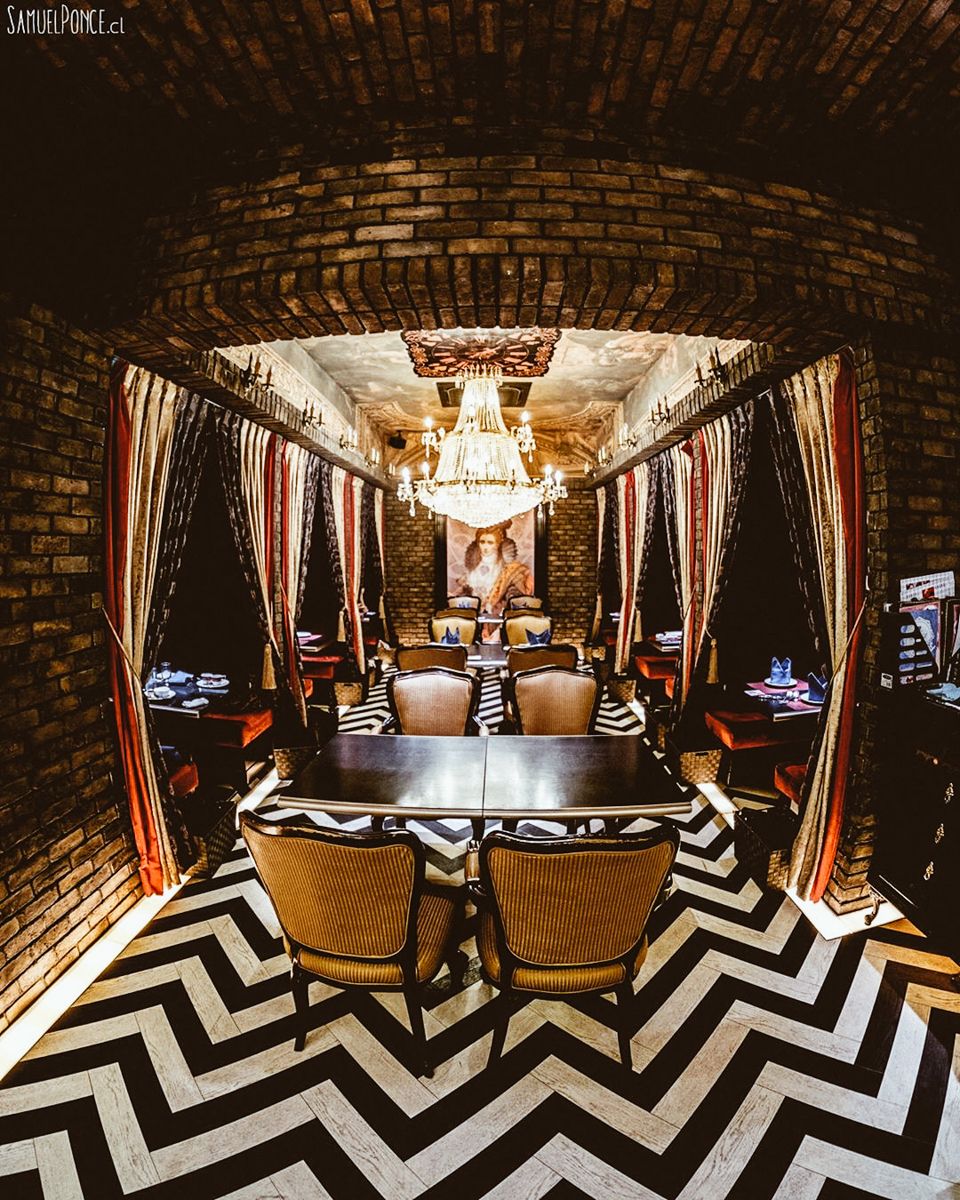
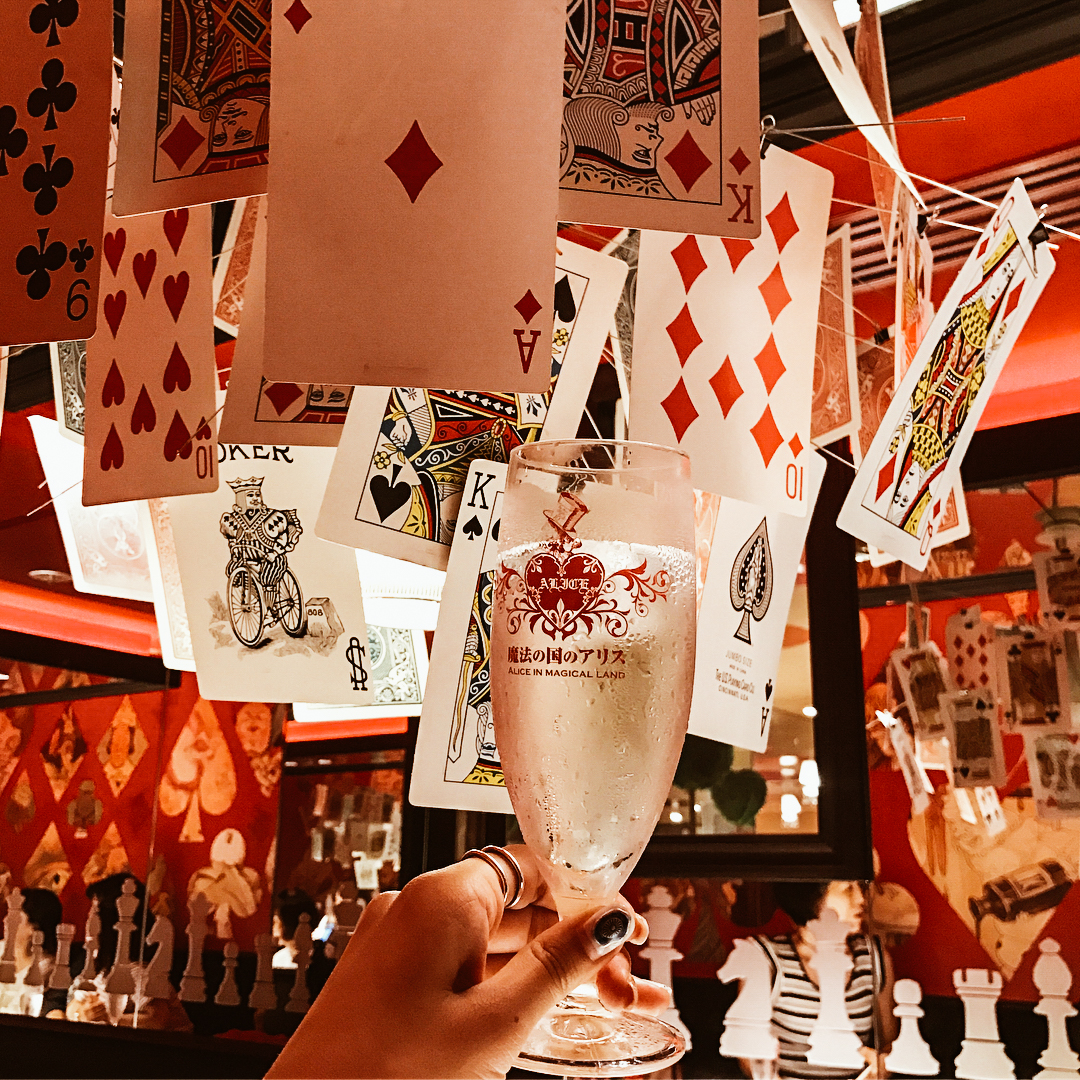


photo credits: samuelponce.cl, satokomorimoto, mydreamsofdisney, kiki_0_0
Official Website: http://www.alice-restaurant.com/
Address:
ALICE IN LABYRINTH (GINZA, TOKYO) 104-0061 東京都中央区銀座8-8-5 太陽ビル5F
ALICE IN FANTASYLAND (UMEDA, OSAKA) 530-0012 大阪府大阪市北区芝田1-8-1D.D.HOUSE1F
ALICE IN FANTASY BOOK (SHINJUKU, TOKYO) 160-0021 東京都新宿区歌舞伎町1-6-2 T-wingビルB2F
ALICE IN MAGICAL LAND (NISHI-SHINJUKU, TOKYO) 160-0023 東京都新宿区西新宿1-5-1 新宿西口ハルクB3
ALICE IN AN OLD CASTLE (IKEBUKURO, TOKYO) 171-0022 東京都豊島区南池袋2-16−8 鈴和ビルB1
Vampire Cafe


photo credit: dd-holdings.jp, ginzavampire
A macabre atmosphere, red velvet curtains, and luxurious chandeliers catapult customers into Medieval Europe, into a real "vampire house". Inside the café, there is even an altar, a coffin and a cross struck by a beam of light to allow total immersion in the gothic world of the legends concerning the creatures of the night. Of course, the menu is also thematic: dishes and cocktails with unique names belonging to the Italian and French cuisine and are served by staff in a vampire costume.
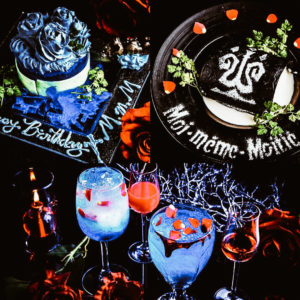
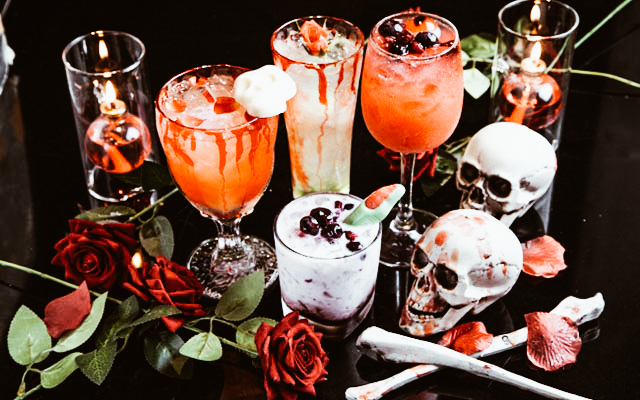
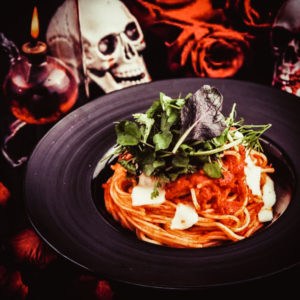
photo credit: prtimes.jp, ginzavampire
Address: 7F, La Paix Bldg., 6-7-6 Ginza, Chuo-ku, Tokyo
Moomin House Cafe
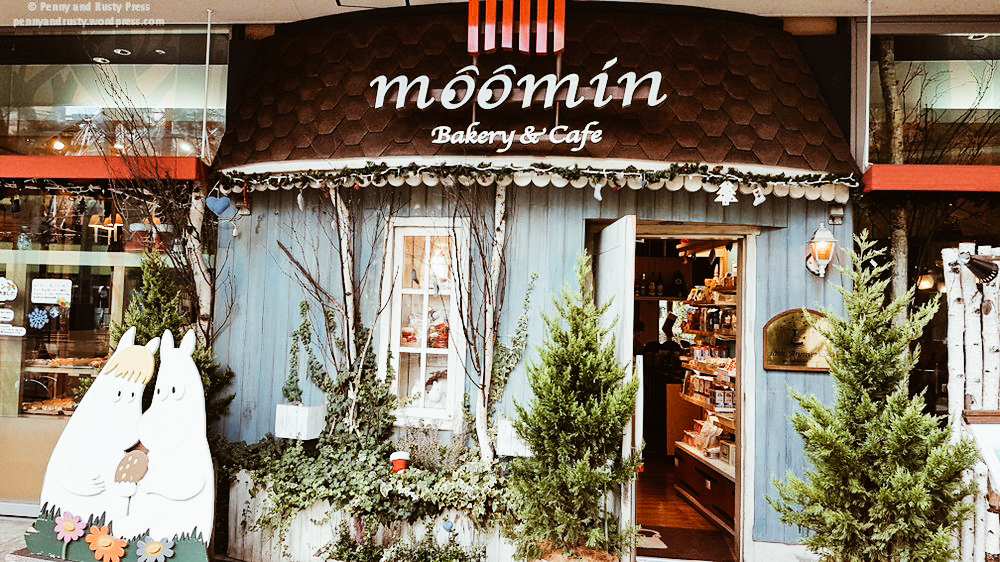
photo credits: yelp.com
The Moomin, despite belonging to the Finnish tradition, have also found a way in Tokyo to welcome fans into their world. The environment recreates the natural woods in which the Moomins live, giving the café that relaxing and timeless aspect whose goal is to allow everyone to have a place to get together and where they can witness many fun moments. Big puppets live in the café and keep company to the lucky visitors who are able to sit next to them. The dishes are tasty and as always perfectly presented to pamper the heart of those seeking a moment of tenderness.
The most famous menu is the "Souvenir Moomin House Pancakes" because the pancakes are served at the table along with ceramic figurines as a souvenir to take away with them.


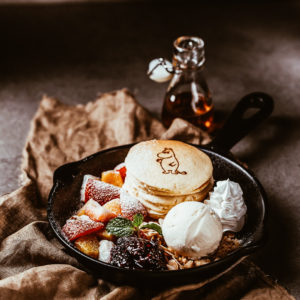
photo credit: moomincafe.jp, japantravel.com, moomincafe
Official Website: https://benelic.com/moomin_cafe/
Address: 1F Tokyo Soramachi, 1-1-2 Oshiage, Sumida-ku, Tokyo
Square Enix's Artnia Cafe
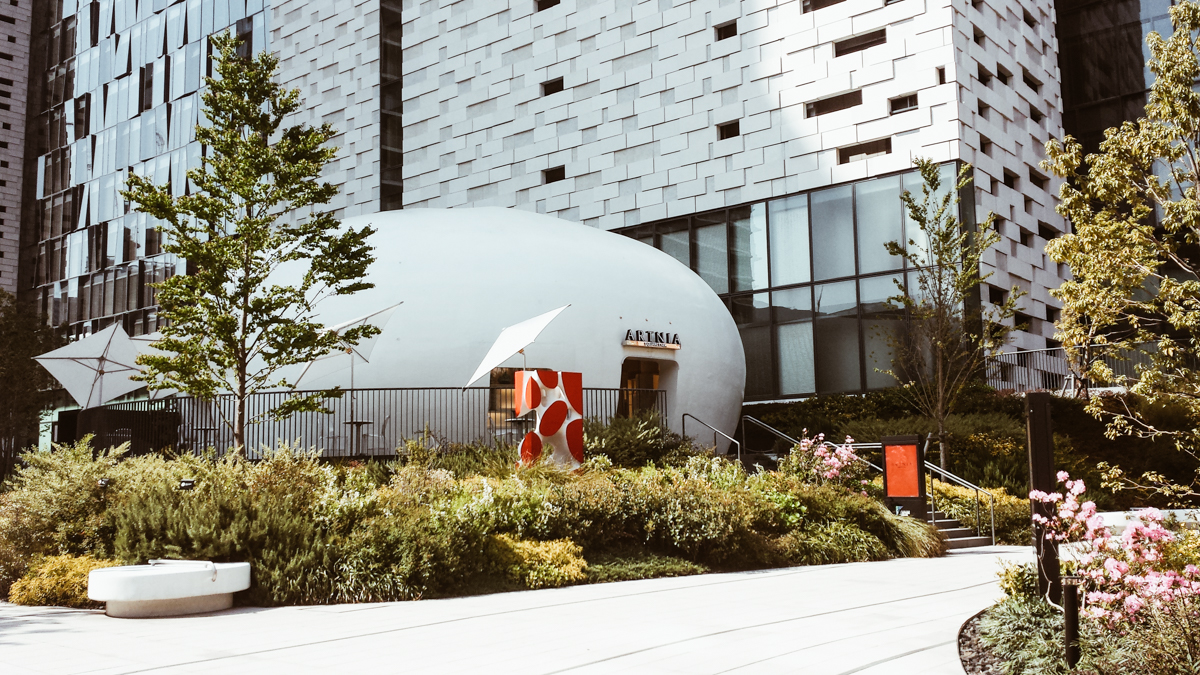
photo credits: sweetkammi.wordpress.com
Located in Shinjuku, Artnia mixes its being Square Enix's official goods store with the café whose dishes are based on the company's prestigious game series. Inside, it’s divided into 3 areas: the "Fancy Area", the area dedicated to the merchandising of Dragon Quest, Final Fantasy and Kingdom Hearts, the real "Café & Bar" that occupies most of the space and the splendid "Luxury Area” located behind the bar and designed in black granite. This luxurious area is a real museum containing replicas of the sagas, statues, works of art and jewels, but it is the fountain that rises in the center to be the real attraction of Artnia. It contains a red crystal suspended inside a waterfall that pours into a pedestal with all the spheres of Materia of various colors.
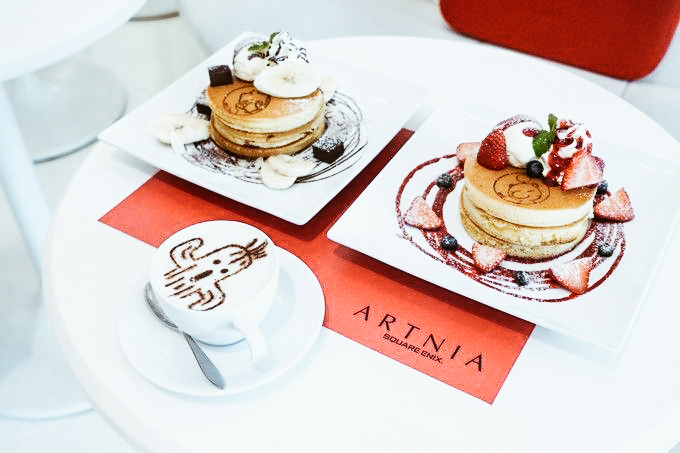
photo credits: favy-jp.com
Official Website: http://www.jp.square-enix.com/artnia/index
Address: 1F Shinjuku East Side Square, 6-27-30 Shinjuku, Shinjuku-ku, Tokyo
Maid Café
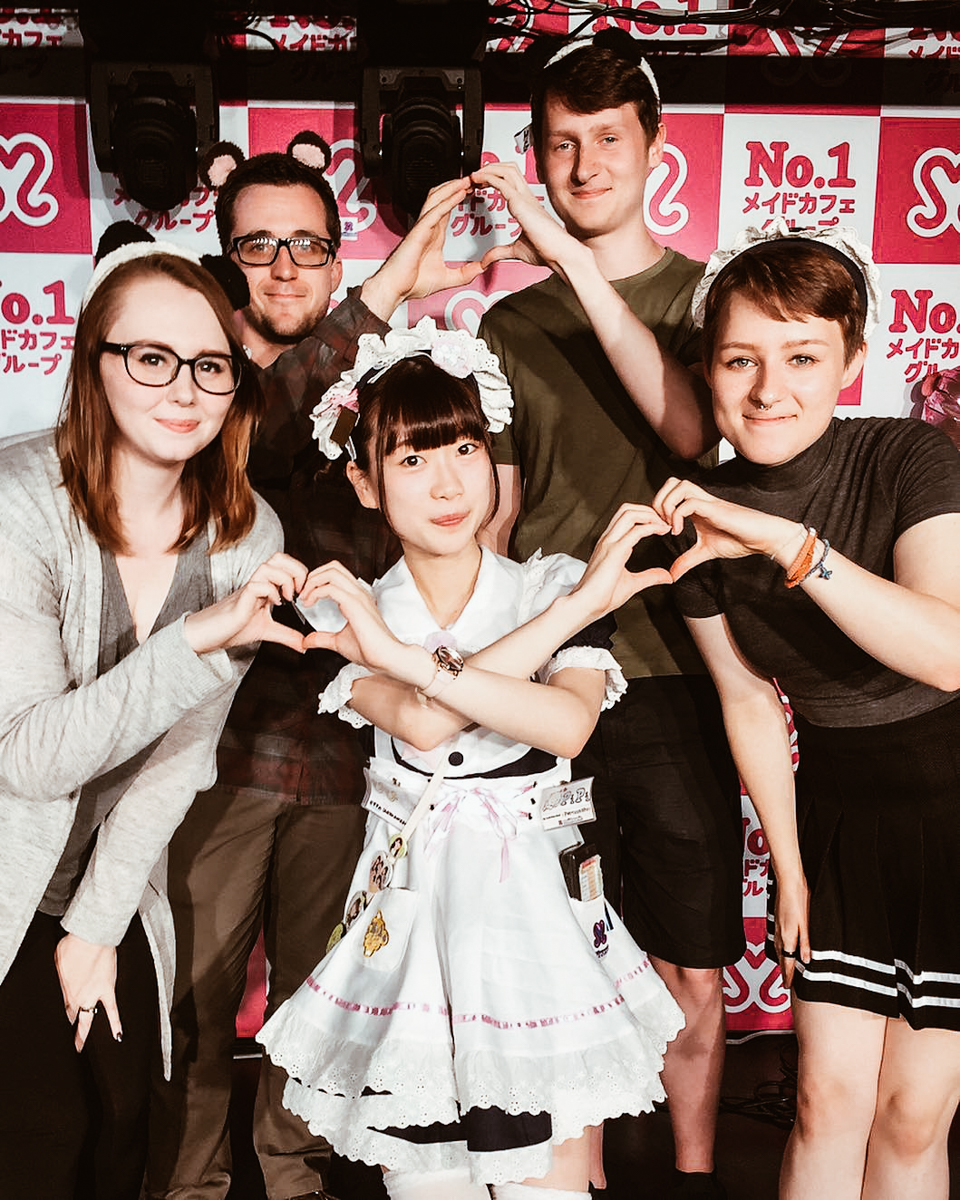
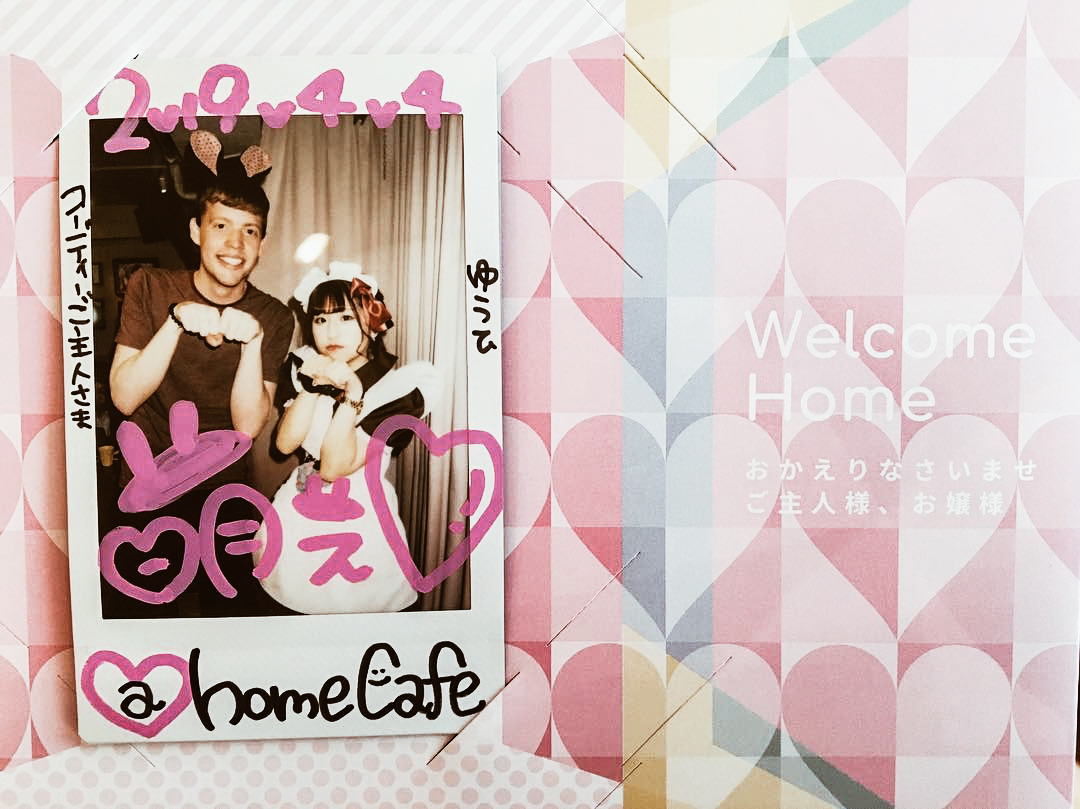
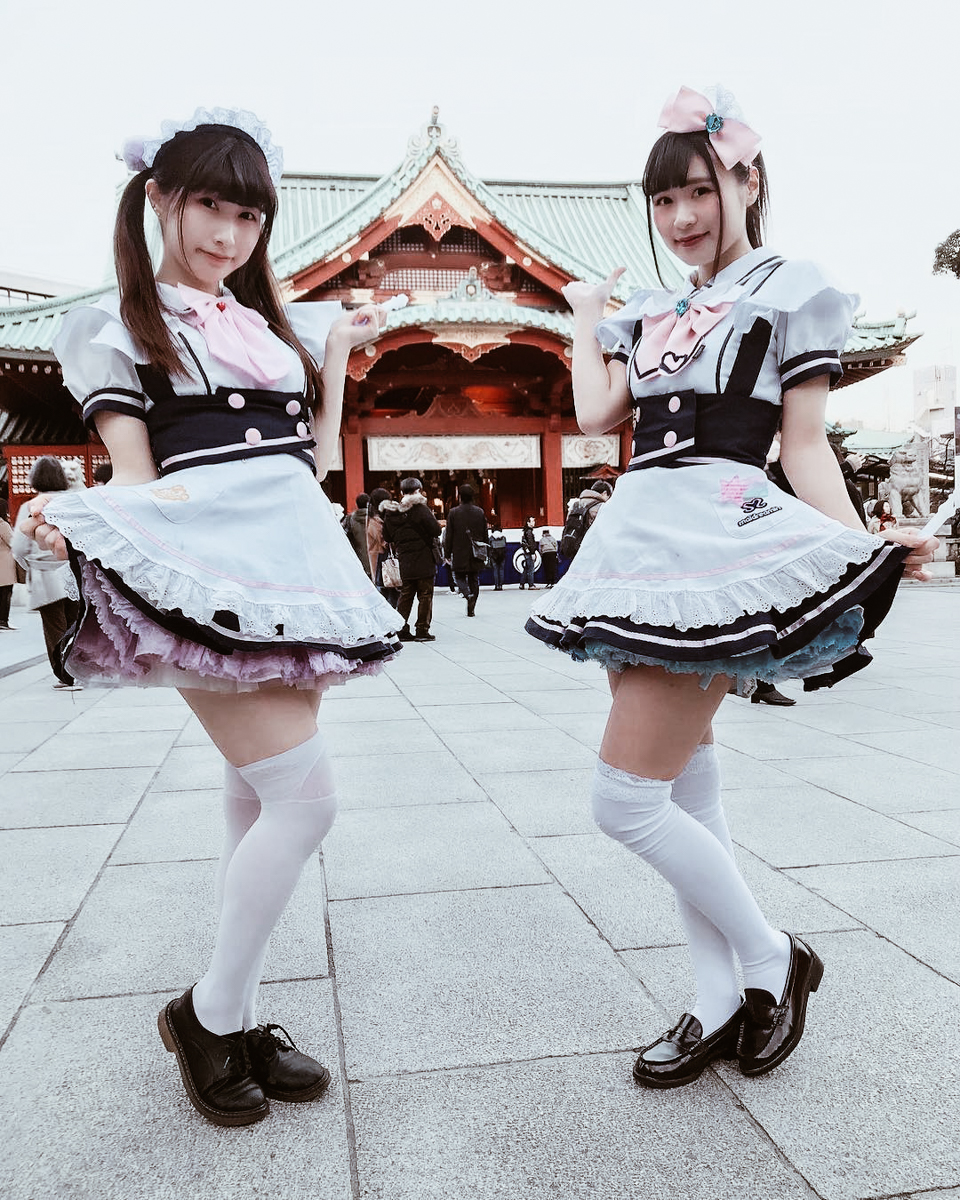
photo credits: cat.m.mayberry, theginger1nch, maidreamin
Better known as "Meido Kissa", the maid cafes are places where customers are served by Victorian-style waitresses, with their clothes full of lace. These maids have the specific task of satisfying customer requests, so the customers are called "Masters" if they are men, or "Princess" if they are women. These places are mostly concentrated in Akihabara and are always full of extremely accurate details. Once inside, a Maid will accompany the visitor who can only stay for 1 hour to the table and will have to choose whether to drink, eat or another of the available proposals. Moreover, the waitresses interact continuously with the customers and if these are not very talkative, then they will start to do ballets and sing little songs. They are very fun and carefree environments, for a more original break than usual!

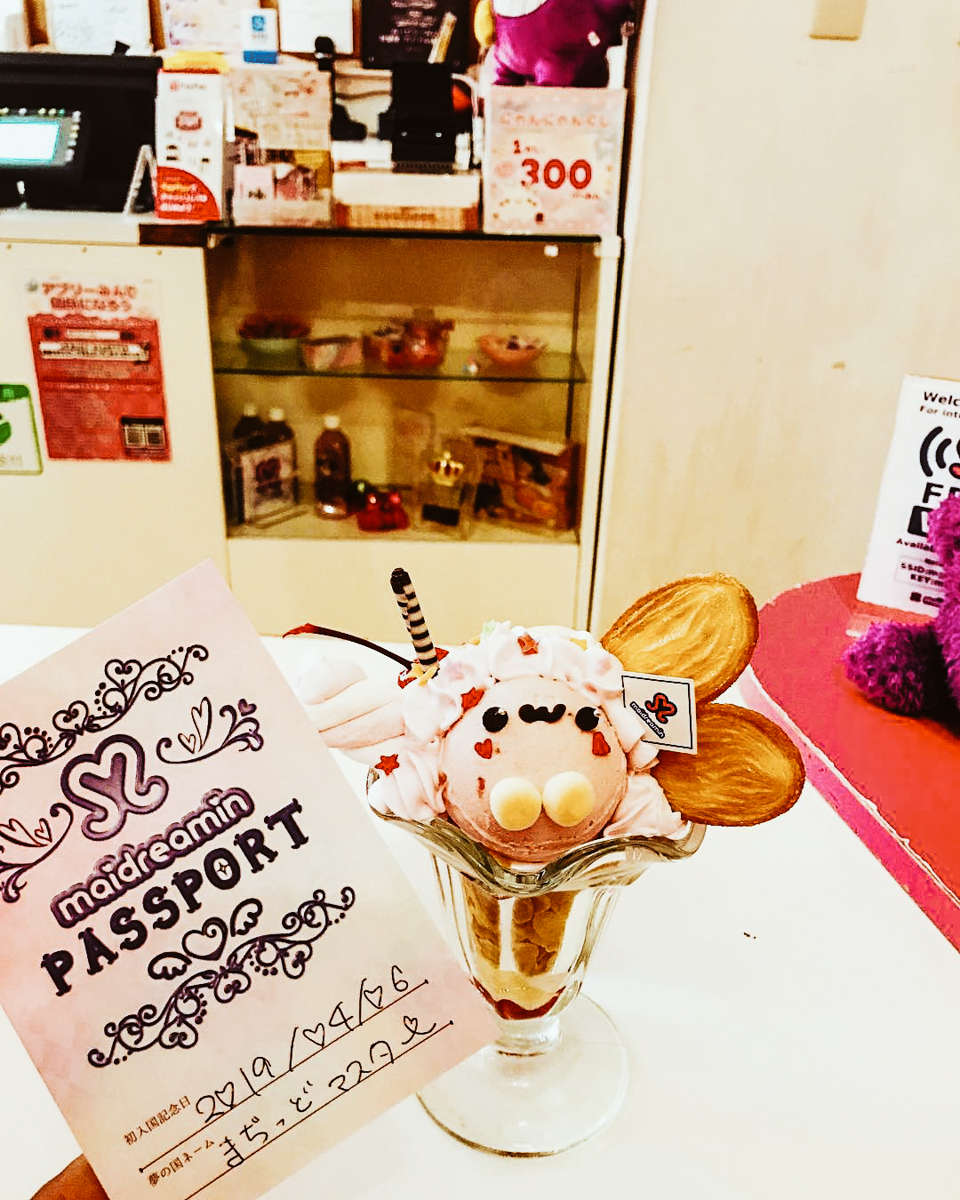


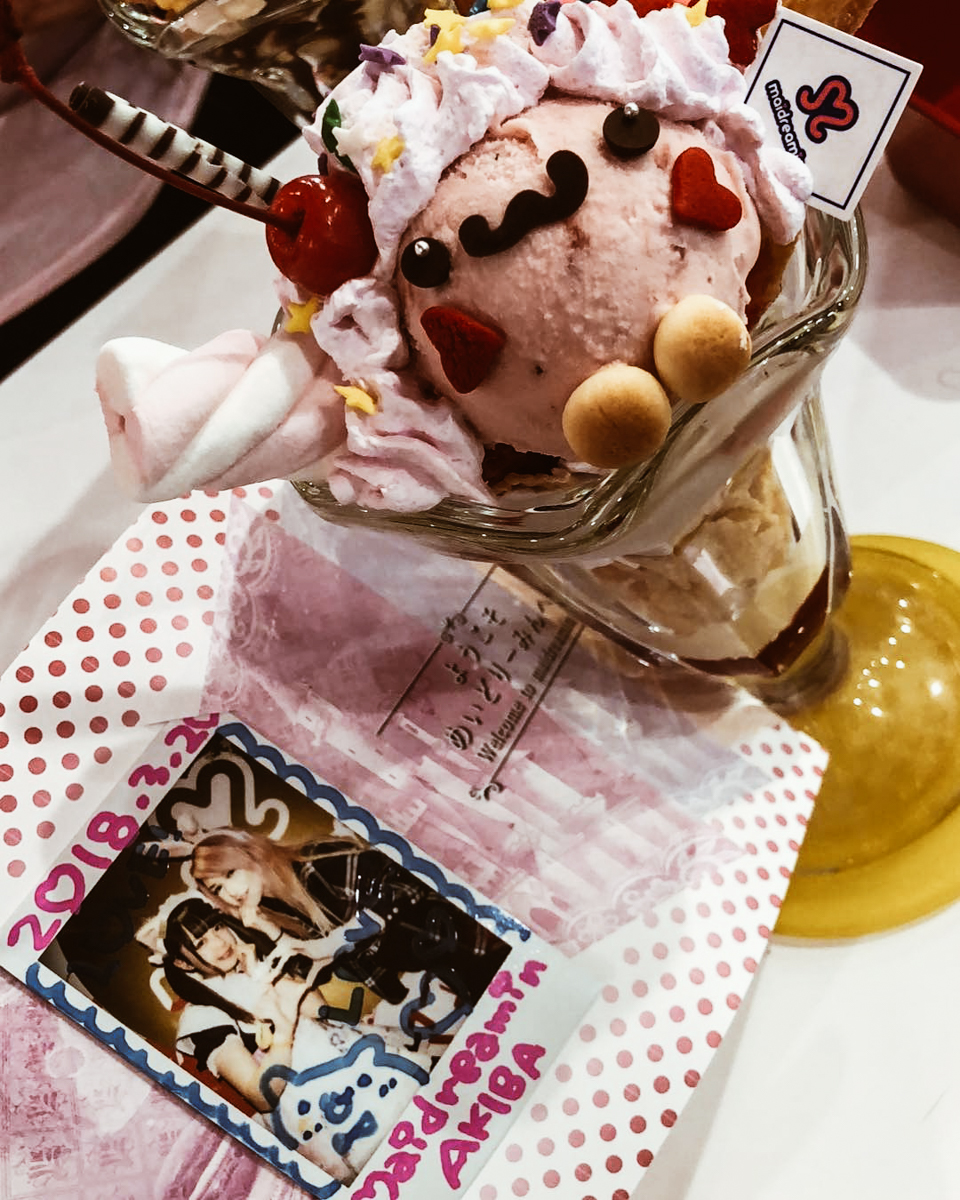
photo credits: wheresmy_dang_food, ranamajid007, pegsfordays, debydraws, m00nvixen
Some of the most popular Maid Cafes:
At-Home Café, 1-11-4 Sotokanda Mitsuwa Bldg. 4-7F, Chiyoda 101-0021 Tokyo, https://www.cafe-athome.com/info/
MAIDREAMIN, head store: Sumiyoshi BLDG.6F 3-16-17 Sotokanda Chiyoda-ku Tokyo 101-0021 https://maidreamin.com
MELCAFE, 4 Chome-9-9 Nipponbashi Naniwa-ku Osaka-shi, Osaka http://mel-cafe.com
Japan Travel: Ginza
Ginza: expensive, elegant and luxurious
Located in Chuō, Ginza (銀座) is Tokyo's most famous shopping area. This luxurious district was once part of the ancient Kyobashi district, which, together with Nihonbashi and Kanda, formed the core of Shitamachi, the original center of Edo-Tokyo. Built on an ancient reclaimed swamp during the 16th century, Ginza owes its name (Silver Mint) to the establishment of a silver coin mint (Silver Coin Mint) on this land in 1612.

photo credit: wikimedia.org
A devastating fire destroyed much of the area in 1872. Following this incident, the government decided that reconstruction was to use fireproof bricks to erect new buildings, and the roads should be improved and enlarged. At the same time, they should be able to connect Shimbashi station to Tsukiji. This new version of Ginza was designated as a "model of modernization" and the Irish architect Thomas Waters was given the responsibility of designing the area. In the following year, a long western-style shopping street rose with two- and three-storey Georgian brick buildings reaching from the Shinbashi bridge to the Kyōbashi bridge.


However, the high cost for both the purchase and the lease of these new buildings prevented their long-term occupations and at the same time, an issue regarding the climate arose; such buildings were not suitable for the weather conditions unique to Tokyo. To add to the issues, the design of this area contrasted with the traditional Japanese style, and as such it was not quite appreciated by visitors who were much more interested in an Edo-style town and rather than something "similar to Broadway", as described in the words of the English tour guide writer, Philip Terry.
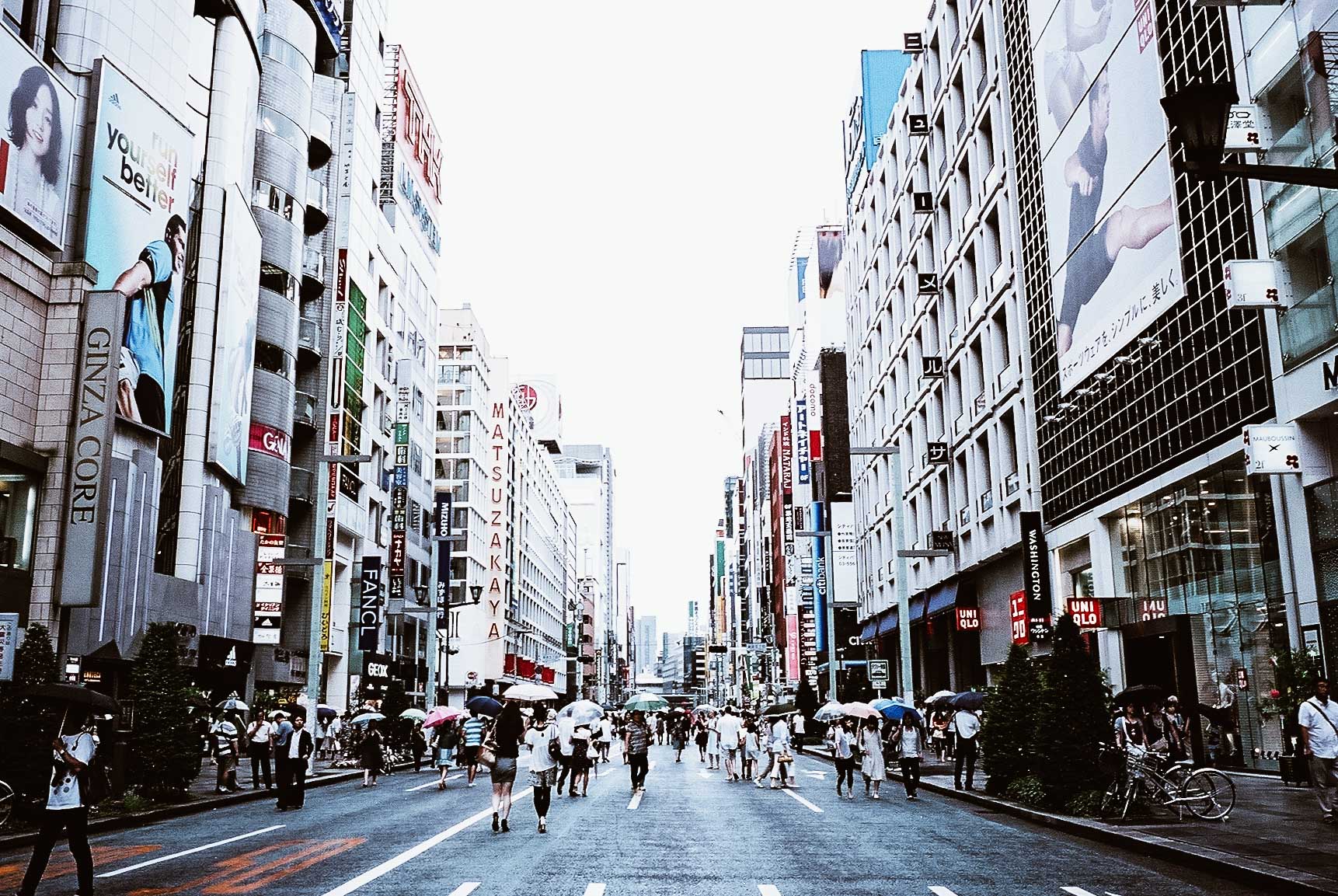
Despite stylistic problems, Ginza managed to flourish as a symbol of "civilization and enlightenment", becoming famous for its rich shop windows. In the period between the two world wars, the habit of spending time and walking through Ginza, even with no purpose, grew very popular. As time passed, most of the European-style buildings have disappeared. Among those remaining is the Wakō building, originally built by Kintarō Hattori, with its iconic Hattori Clock Tower and its luxurious gold objects inside.

photo credits: japantimes.co.jp
Not only shopping
A key stop for shoppers in Ginza is definitely Ginza Six. Opened in the spring of 2017, it is the largest shopping complex in the district. In addition to numerous cosmetic and fashion floors, there are floors dedicated to food and interior design, a large Tsutaya bookstore specializing in art publications, a pleasant rooftop garden and a Noh theater in the basement.
No less famous is the store of the chain Mitsukoshi. While this store opened in 1930, its history dates back to 1673, when it was first established. It offers products and services on twelve floors. Fans of the brand Uniqlo will find satisfaction in this 12-storey building which offers the widest range of products in the world of this brand.

Ginza, however, is not just limited shopping. For Kabuki representations, the best place is found in this part of town. It is the Kabukiza Theater. Do not miss a trip to the Yurakucho Gado-shita Dining as well. It is one of Tokyo's most interesting dining options, located under the sky train tracks, north and south of the Yurakucho station (In Japanese: Gado-shita, "under beam"). Dozens of restaurants are integrated into the brick arches below the Yamanote line which extend for over 700m. Here you can taste world-famous Japanese cuisine, or sip special wines in the luxurious French wine shops.

photo credits: harv.world
Japan Traditions: Wakakusa Yamayaki Matsuri
One of Japan's most famous matsuri is the Wakakusa Yamayaki Matsuri held in the city of Nara on the fourth Saturday of January.
photo credits: matsuritracker on flickr
Le Origini
On the top of the third hill of Mount Wakakusa we find the Uguisuzuka Kofun, a keyhole-shaped tombstone.
Legends say that in the past if the mountain was burned by the end of January in the new year, it was possible to repel deaths returning from their graves. On the contrary, if the mountain was not burned by the end of January, a big period of misfortune layed before the city of Nara. As a result, the stories tell that people passing by Mount Wakakusa began to ignite the mountain without permission.
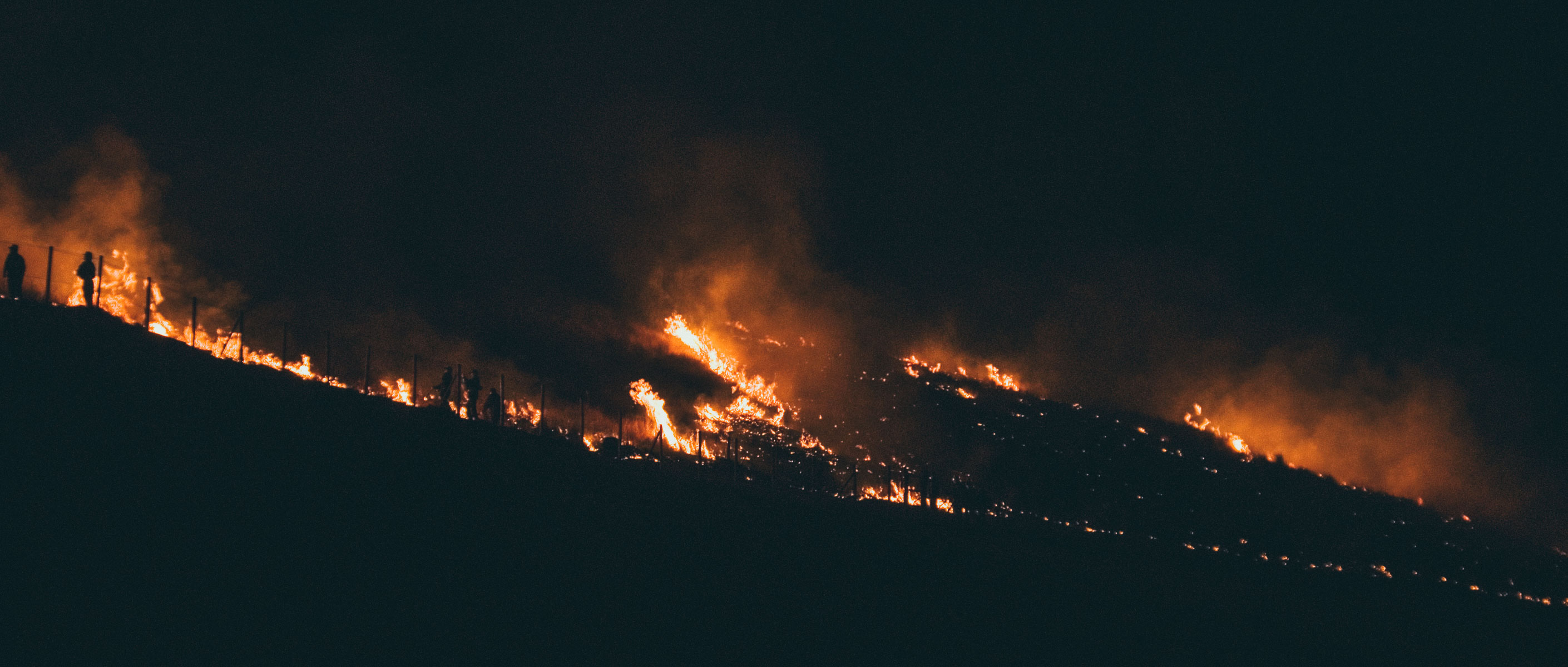
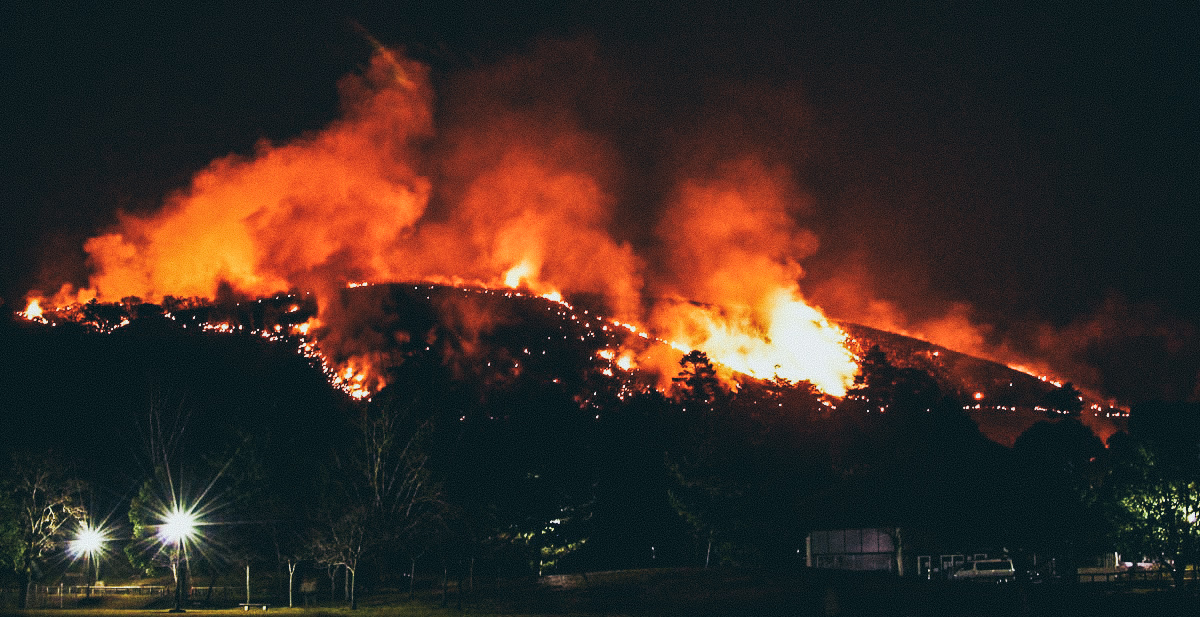
photo credits: smartus & matsuritracker on flickr
Following this, there were some incidents where the fire from Mount Wakakusa came to approach the boundaries of the Todaiji and Kohfukuji temple repeatedly. Because of this, in December 1738, the Nara magistrate's office (Bugyosho) prohibited people from burning the mountain. However, the arson fires continued at the hands of anonymous people and on some occasions approached the nearby cities and temples. To avoid similar dangers, the city of Nara established a rule to allow people to burn the mountain with the participation of representatives of the Todaiji and Kohfukuji temples along with the Nara Bugyosho at the end of the Edo period.
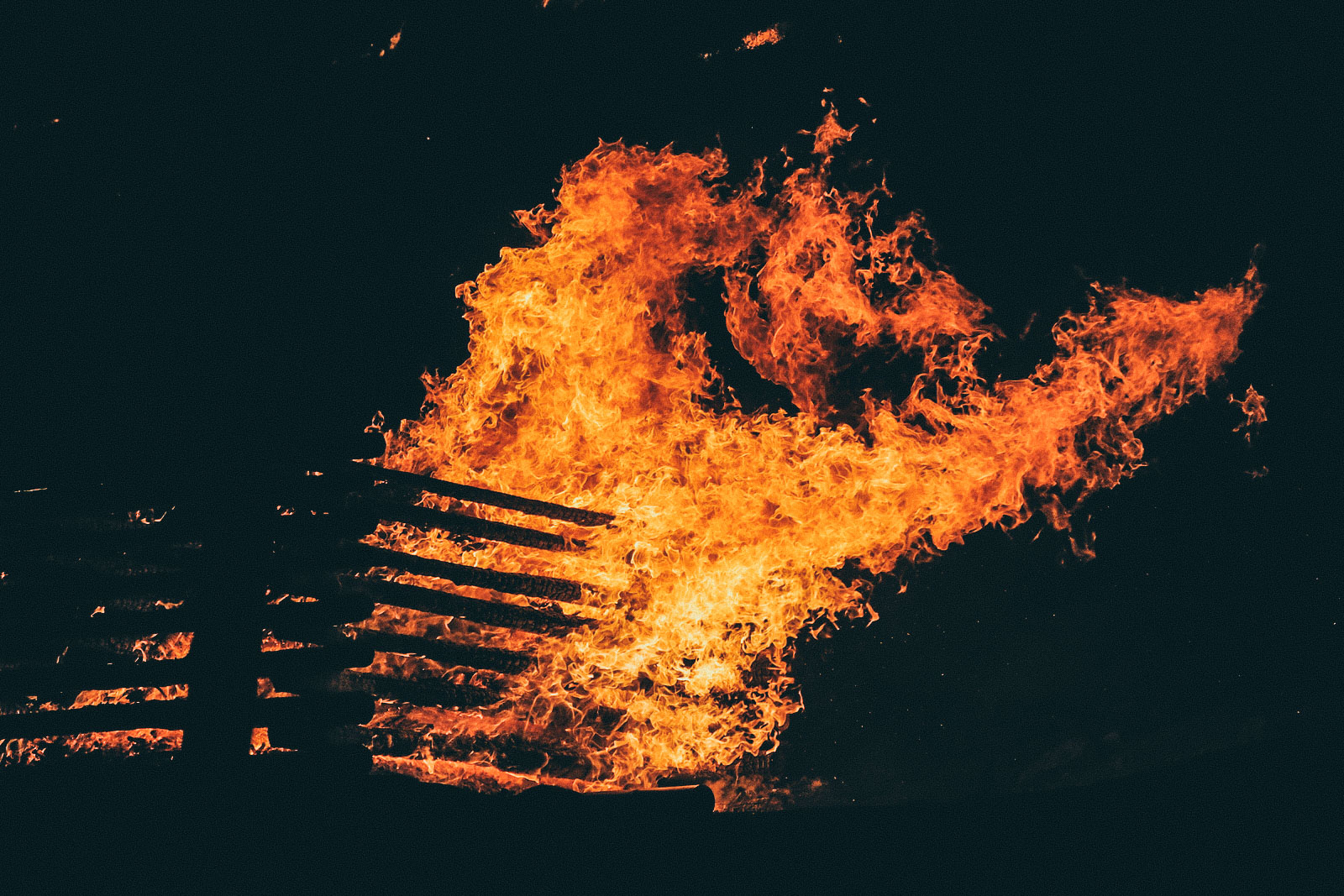
photo credits: toshimo1123 on flickr
The Yamayaki festival (burning mountain) comes from superstitions to calm the spirits of the dead at the Uguisuzuka Kofun located at the top of the mountain, so the Yamayaki could also be considered as a moment of service in memory of the dead.
Modern history and present day
Since 1900, there have been a series of changes related to Wakakusa Yamayaki Matsuri. Firstly, the time was shifted from day to night and even its date moved to 11 February (Day of the Empire), although during the period of World War II, the celebrations were held during the afternoon. Later, in 1910, the organization passed into the hands of the prefecture of Nara.


photo credits: karihaugsdal on flickr
After the end of the war, the Yamayaki once again became an evening event together with a fireworks display of over one hundred fireworks.
During the fifties, the date of the Yamayaki was moved to January 15, the "Coming of Age day", while in 1999, due to the implementation of the so-called "Happy Monday System Act" (law that moved some public holidays on Mondays) , the festival was celebrated on the Sunday before the "Coming of Age day".
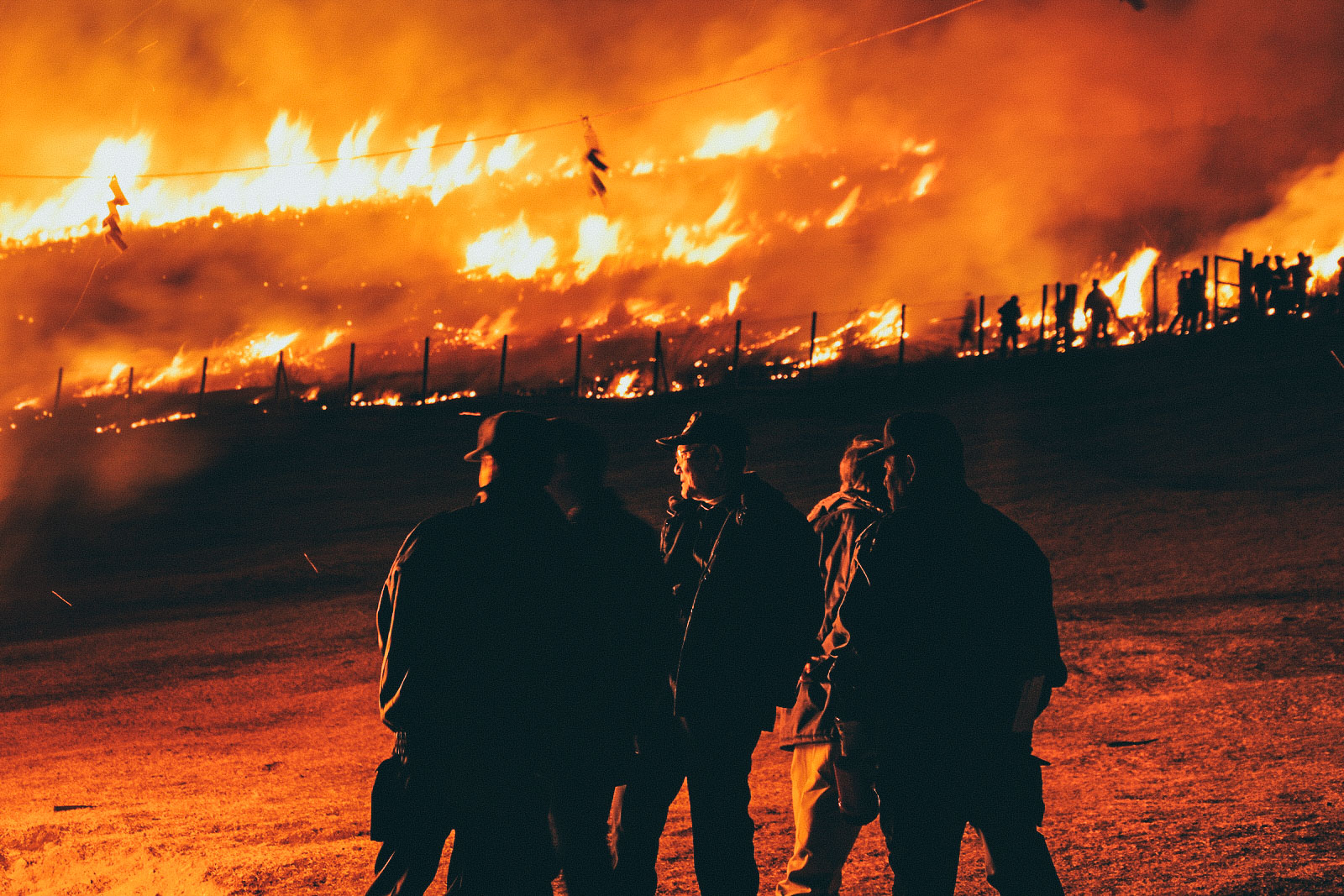

photo credits: toshimo1123 & nwhitely on flickr
Since 2009 we find the combination that still exists today, where the event is held on the fourth Saturday in January with a fireworks display of hundreds of fireworks.
On this matter, this is the only event in Nara that uses the Shakudama fireworks that have a diameter of over 30cm. An absolutely magical fireworks display that we guarantee will always remain engraved in your memories.
Mount Wakakusa
Mount Wakakusa is 342 meters high and 33 hectares wide and is covered with grass with delicate slopes. Here you can see deers, seasonal flowers and plants, like the traditional Japanese cherry trees in spring and the fantastic autumn colors typical of Japan. Also from its top, it is possible to see the whole panorama of the city of Nara with all its historical part.

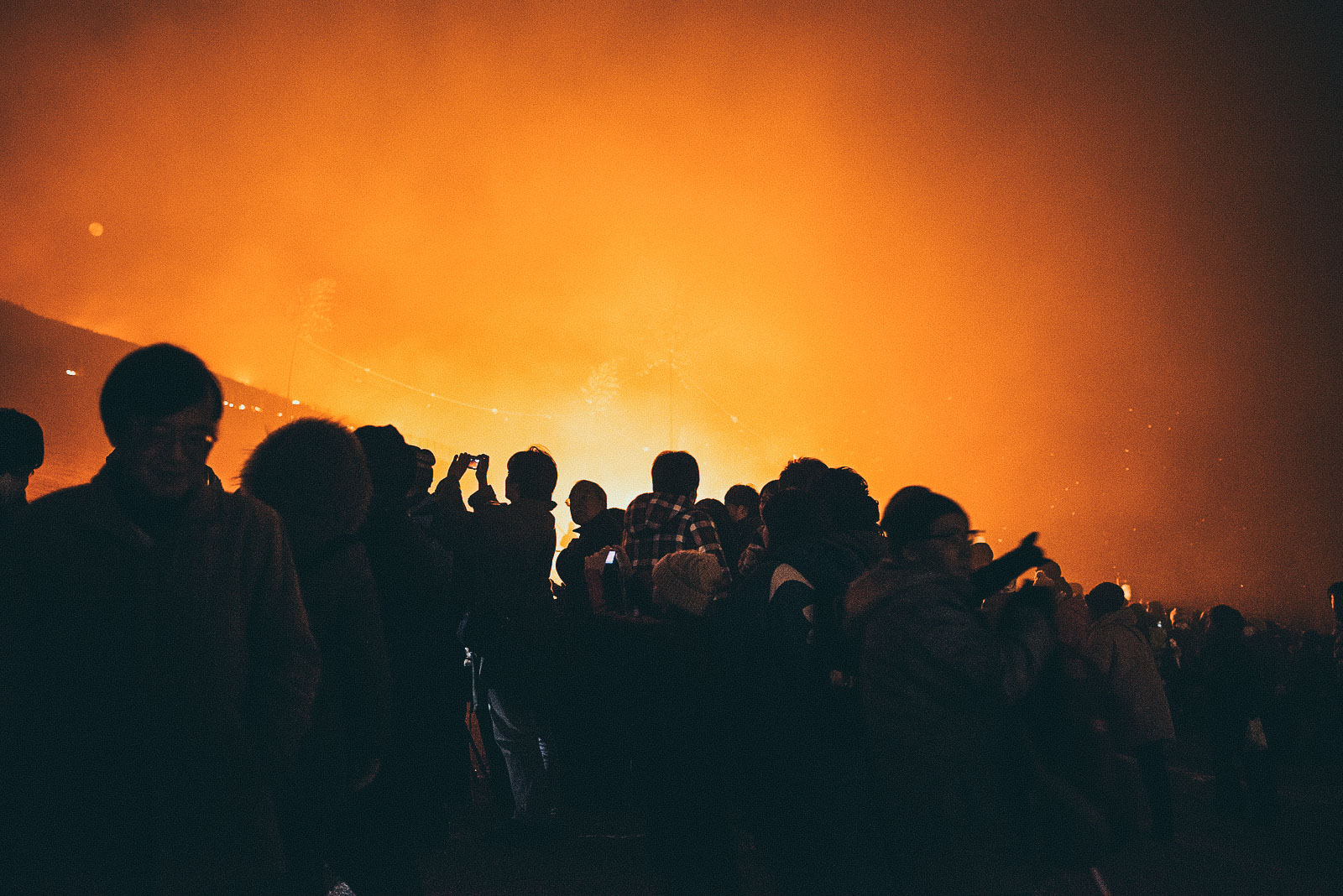
photo credits: 158175735@N03 & mashipooh on flickr
Mount Wakakusa is surrounded by many UNESCO world heritage sites such as the temples Todaiji and Kohfukuji and the spring forest of Mount Kasuga, so be very careful to avoid accidents such as spreading the fire.
The parade
Led by the sound of shell horns played by the mountain priests of the Kinpusenji Temple, more than 40 people face the solemn parade through the park, wearing the traditional costumes of the representatives of the temples of Kasugataisha, Todaiji and Kohfukuji and of the officers of the judiciary office of Nara in the Edo period.
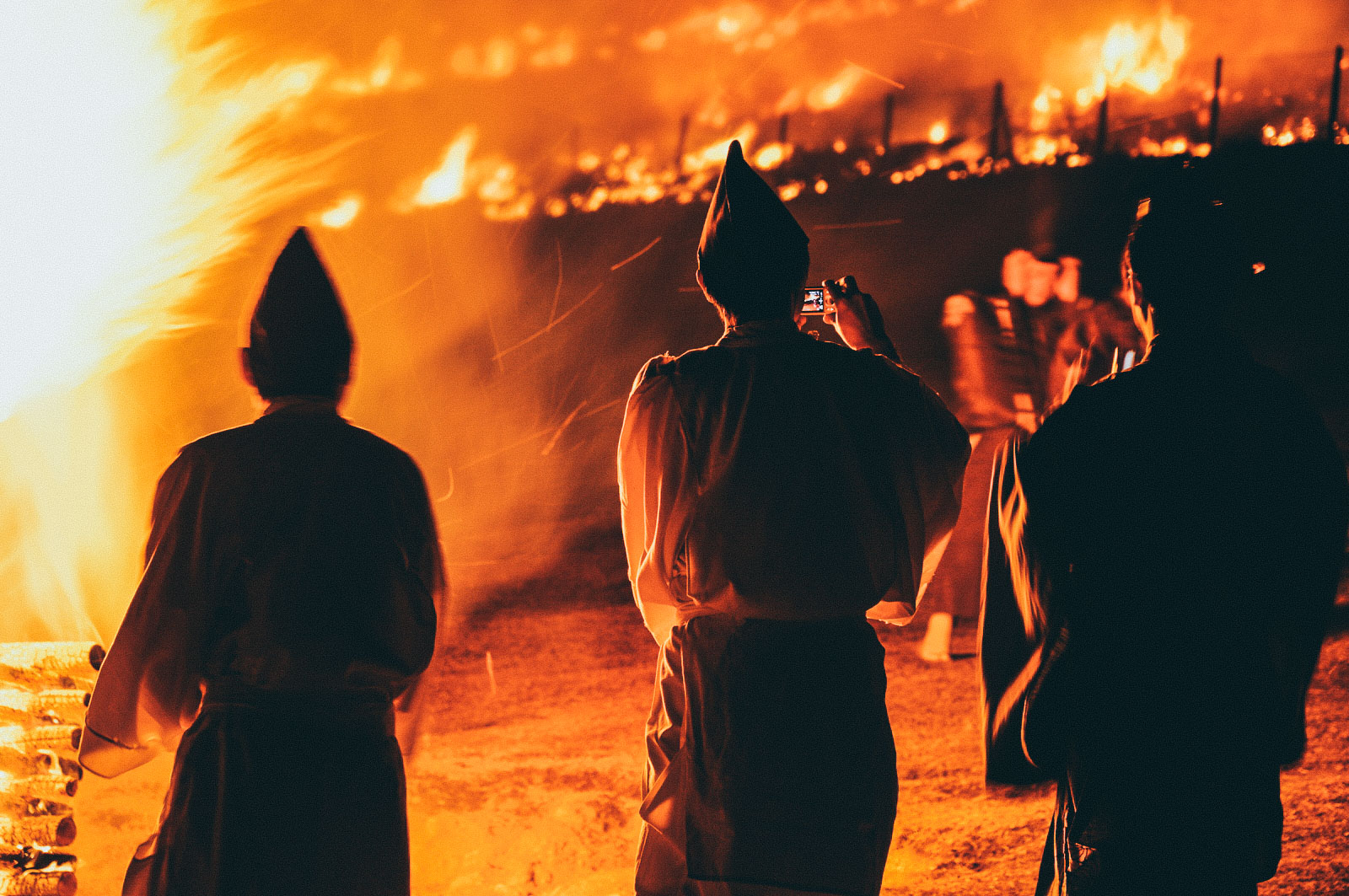
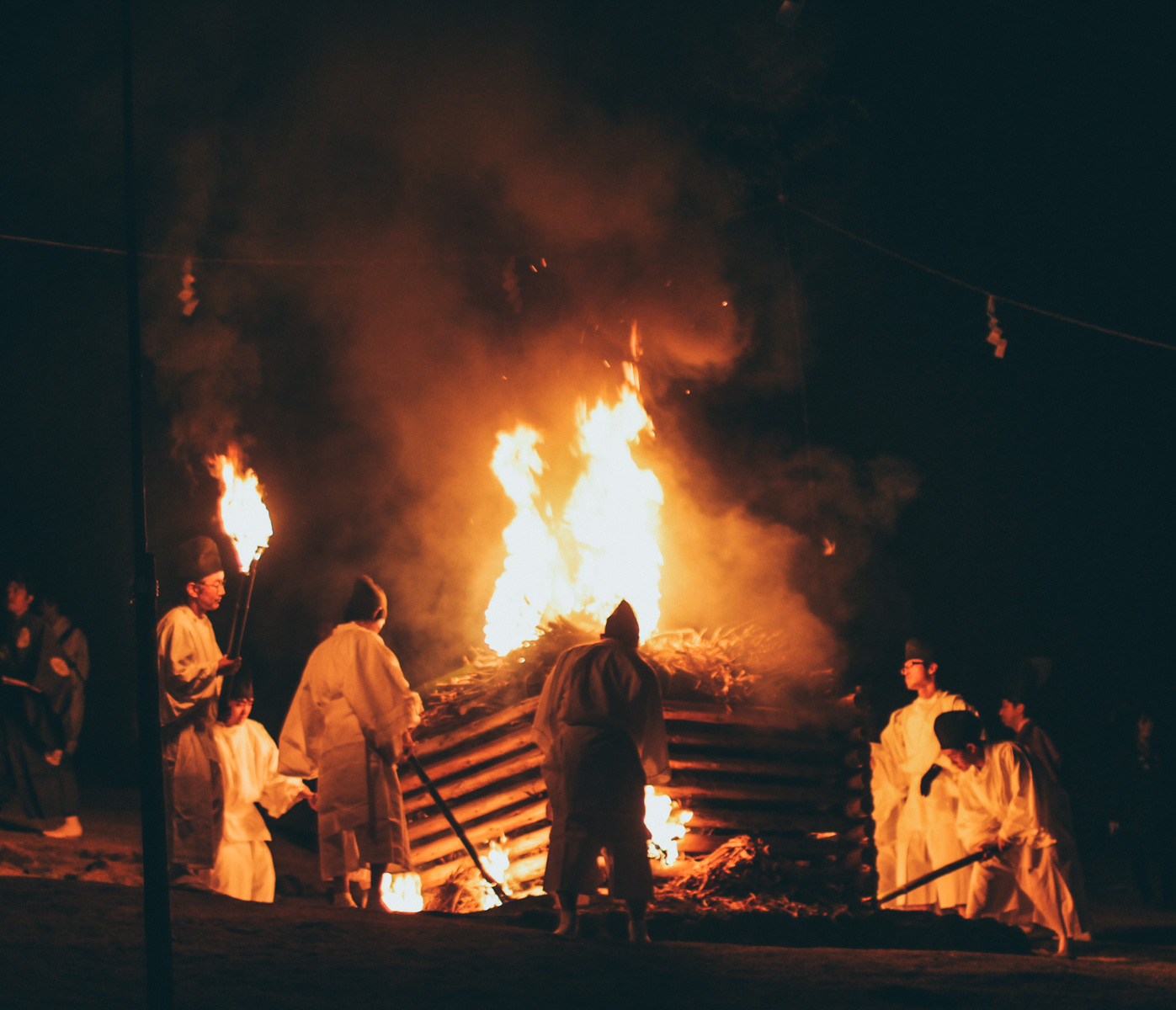
photo credits: toshimo1123 & katiefujiapple on flickr
The event begins with the Gojinkahotaisai, the sacred fire acceptance ceremony held at the Tobohino park, on the site of the Great Round Bonfire. In this ceremony, the sacred fire is transferred from the Great Round Bonfire to the torches. Following this, the parade will take the sacred fire to the Nogami temple. Once arrived at the Mizuya temple, the sacred fire brought by time Kasugataisha will be transferred to a series of torches. Once at the Nogami Temple, at the base of Mount Wakakusa, the sacred fire forms another great bonfire.

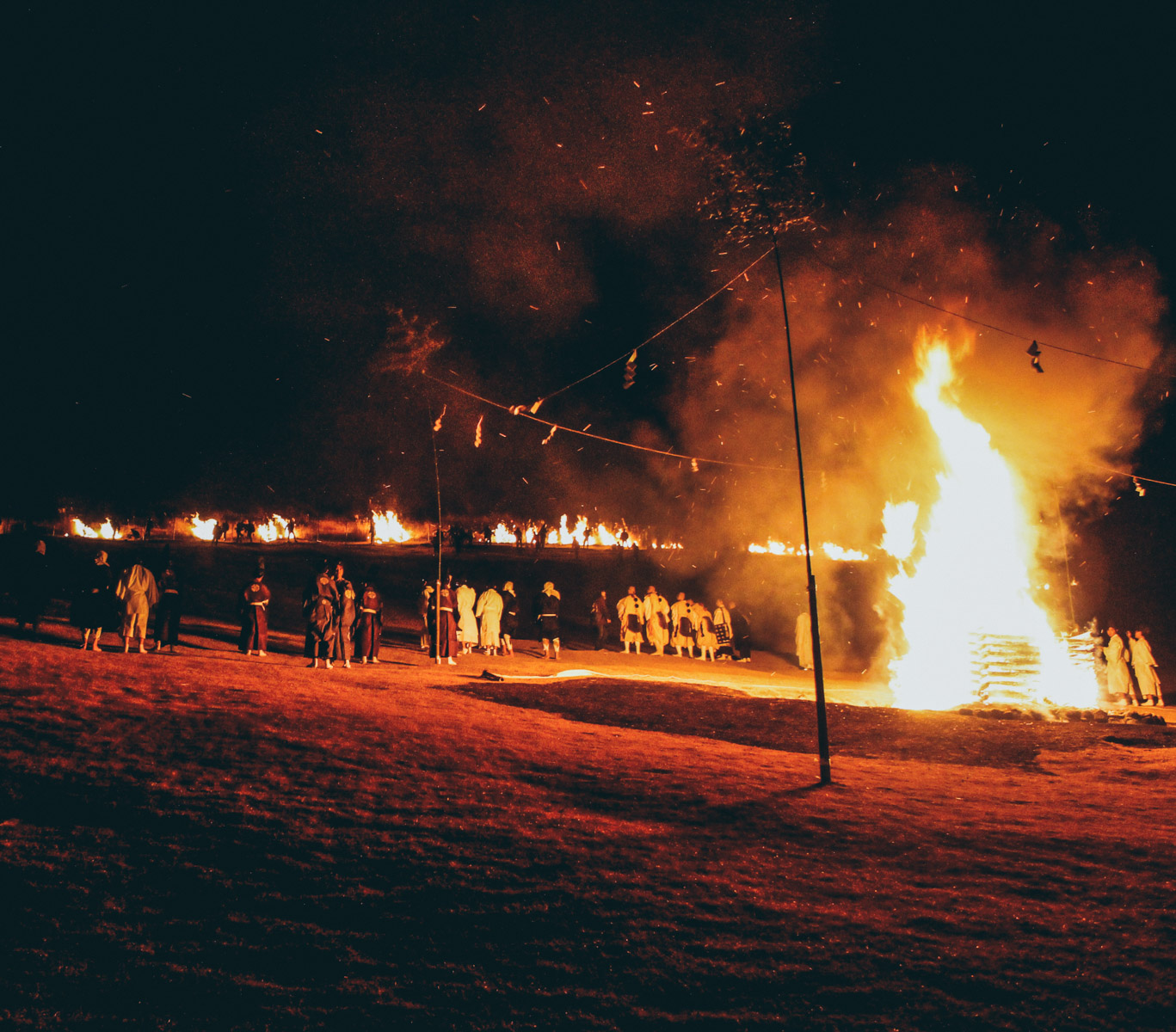
photo credits: katiefujiapple on flickr
During the parade, the fire is accompanied by constant prayers in the first place for the safety of the Yamayaki. The fire is then transferred back to the torches, accompanied by the songs of the priests of the temples Todaji, Kohfukuji and Kinpusenji. At this point, the parade moves towards the big bonfire in the center at the base of the mountain where it is lit, thus giving birth to the spectacle of light and heat.
photo credits: nara-park.com
Access
Mount Wakakusa is about a 10 - 15 minute walk from the Todaiji temple and Kasuga Taisha. The mountain can also be reached on foot from Kintetsu Nara station in about 35 minutes or from JR Nara station in about 50 minutes. Alternatively, you can use buses departing from both the station and Kasuga Taisha for a small fee.
If you are in Japan during this period, the next Yamamaki will take place in a few days, January 26, 2019. Do not miss it and we’ll wait for your stories!

photo credits: ks_photograph
Japan Travel: Meiji Shrine
The Meiji Era
The Meiji Period (明治 時代 Meiji jidai, "period of the illuminated kingdom") is one of Japan's most famous historical moments. It expands from October 23, 1868 until July 30, 1912 and includes the 44-year reign of Emperor Matsuhito.

photo credit: Wikipedia
Following the fall of the Tokugawa Yoshinobu shōgunate, the era of Emperor Meiji, the first with political power, began. It is precisely during these years that the political, social and economic structure of Japan began to change based on the Western model.
Following the death of Tokugawa Ieyasu in 1866, Tokugawa Yoshinobu was named as his successor, remaining in power a few months, until November 1867, when the shōgun submitted his resignation and ceded his powers to the court. In January 1868, Tokugawa's troops were replaced in Kyoto by a coup. And it is precisely in this period that the Meiji Restoration begins, restoring power to the emperor after centuries of shogun’s rule.

photo credit: Wikipedia
The first action exercised by the new Meiji government was to give some more privileges to the samurai class, which remained dissatisfied with the previous regime. Following the numerous contrasts in 1869 the daimyō were appointed governors of their feuds. However, the latter were suppressed in 1871, allowing the "formal" centralization of power and the reinforcement of the imperial institution. Not everyone agreed to the renunciation of their feuds, but to maintain order and stability, the government persuaded the daimyō with promises of strong rewards.
Along with this compromise, the government also compromised with the samurai class, approving a law that allowed them to carry out any occupation in the business field and public administration (the most popular were the institutional police body and the imperial army) . As a result of this, the maintenance of the samurai class was taken over by the central government, also by giving the remuneration.
In this new state, the image of the emperor became more and more significant and in June 1869, with the "oath of the Charter" in favor of the emperor Meiji, the first constitution was born. Here the full powers of the central government were enunciated, even if the political decisions of the country were still entrusted to an oligarchic government.
Until 1881, the regime governed in an authoritarian way with no opposition from the ruling class, but it is in this year that a great crisis broke out. Here, with a request to the emperor, he invoked the desire to transform the government into a parliamentary form.

photo credit: Wikipedia
Despite the difficulties, the Meiji period remains one of the most important eras and one with more changes in Japanese history. It is here that the foundations were laid for today's government of the Land of the Rising Sun.
The Meiji temple
Located in the heart of Tokyo and surrounded by a natural and urban forest, the Meiji-Jingu is a pearl of Shintōism and one of the city's most symbolic sanctuaries.


Located in the Yoyogi park, in Shibuya, the structure was completed in 1920, in honor of Emperor Meiji (1852 - 1912) and his wife Shôen (1849 - 1914). The shrine was also the victim of the bombings during the Second World War, but rebuilt completely soon after. This is a great demonstration of Japanese gratitude to this emperor, and the most striking example is the huge park that surrounds this place of worship, with more than one hundred thousand trees sent by the inhabitants of the archipelago in honor of the memory of this emperor.
To access the sanctuary, still in activity, you have to cross the large surrounding forest and pass under the magnificent Torii in cypress. Before you can enter the courtyards and sacred buildings, you must respect some rules of etiquette, such as the purification of the body with water and the greeting to the Torii.

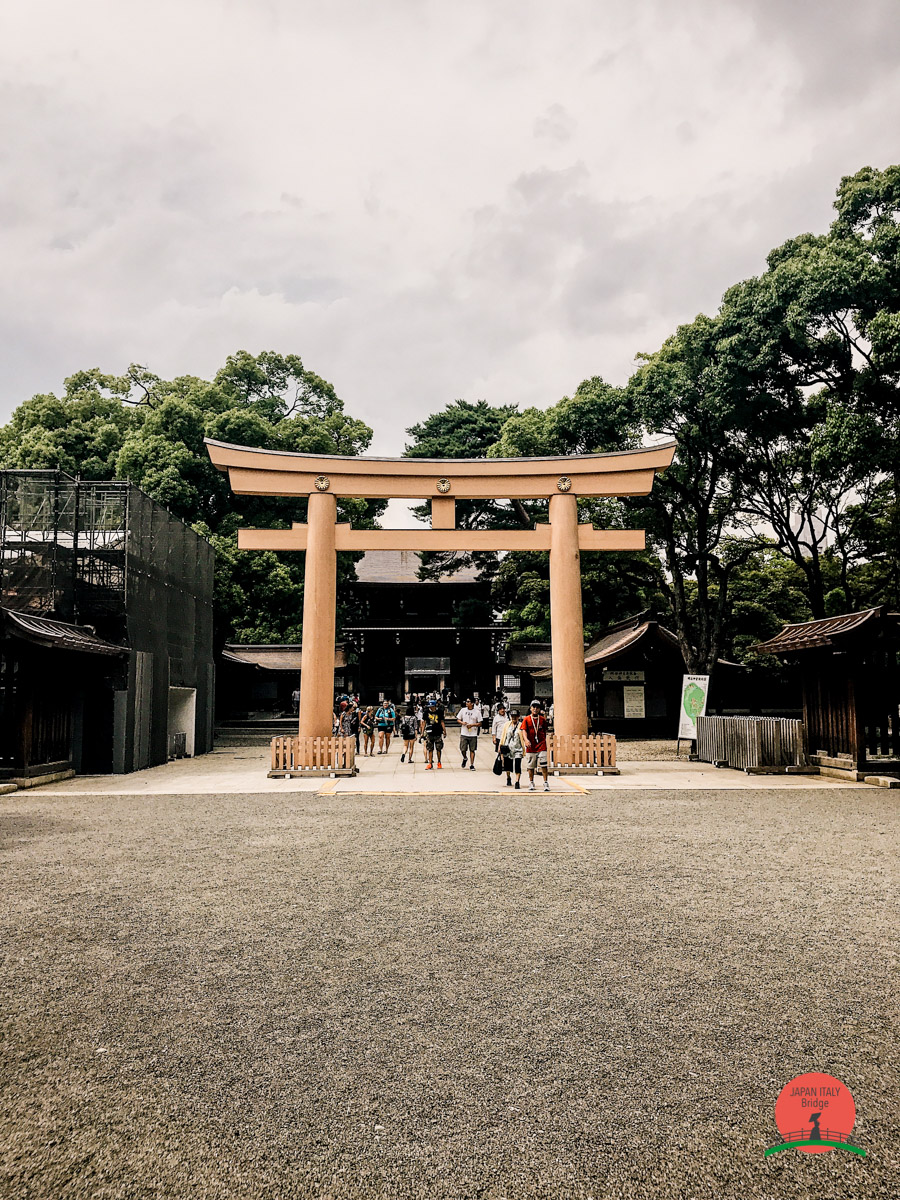
It's amazing how after passing the big Torii gate, Tokyo's noisy comings and goings are replaced by the quiet sounds of the forest and the thick foliage of trees. Here temple visitors can take part in typical shinto activities, such as offerings in the main area, buying goodies and amulets, or writing your own wishes on the famous ema tablets. It is not rare, in fact, to find people of all ages who buy these wooden tablets and express their desire by writing on these supports. Once you have expressed your wish, you can hang the ema on a central support in the temple and subsequently they will be recovered by the priests who will then send messages to the Kami (gods).
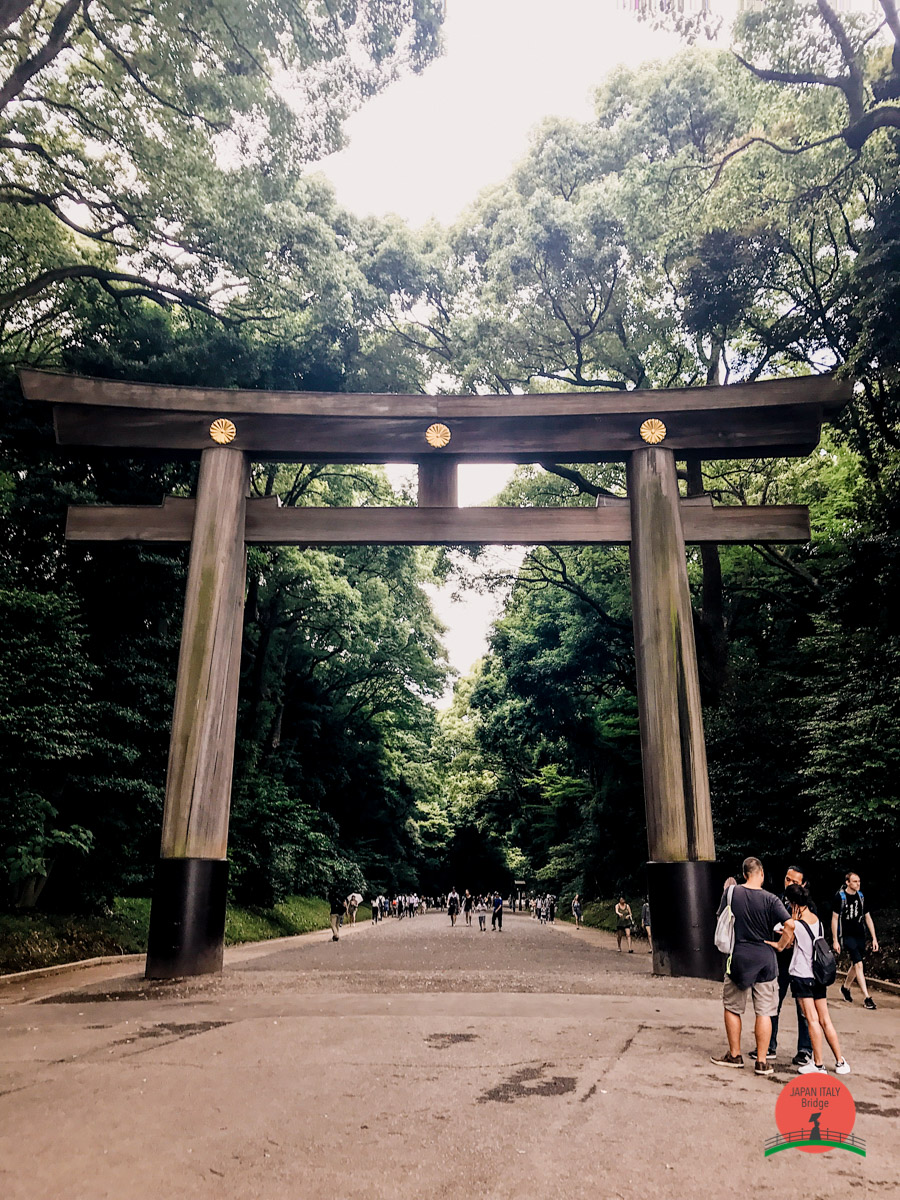
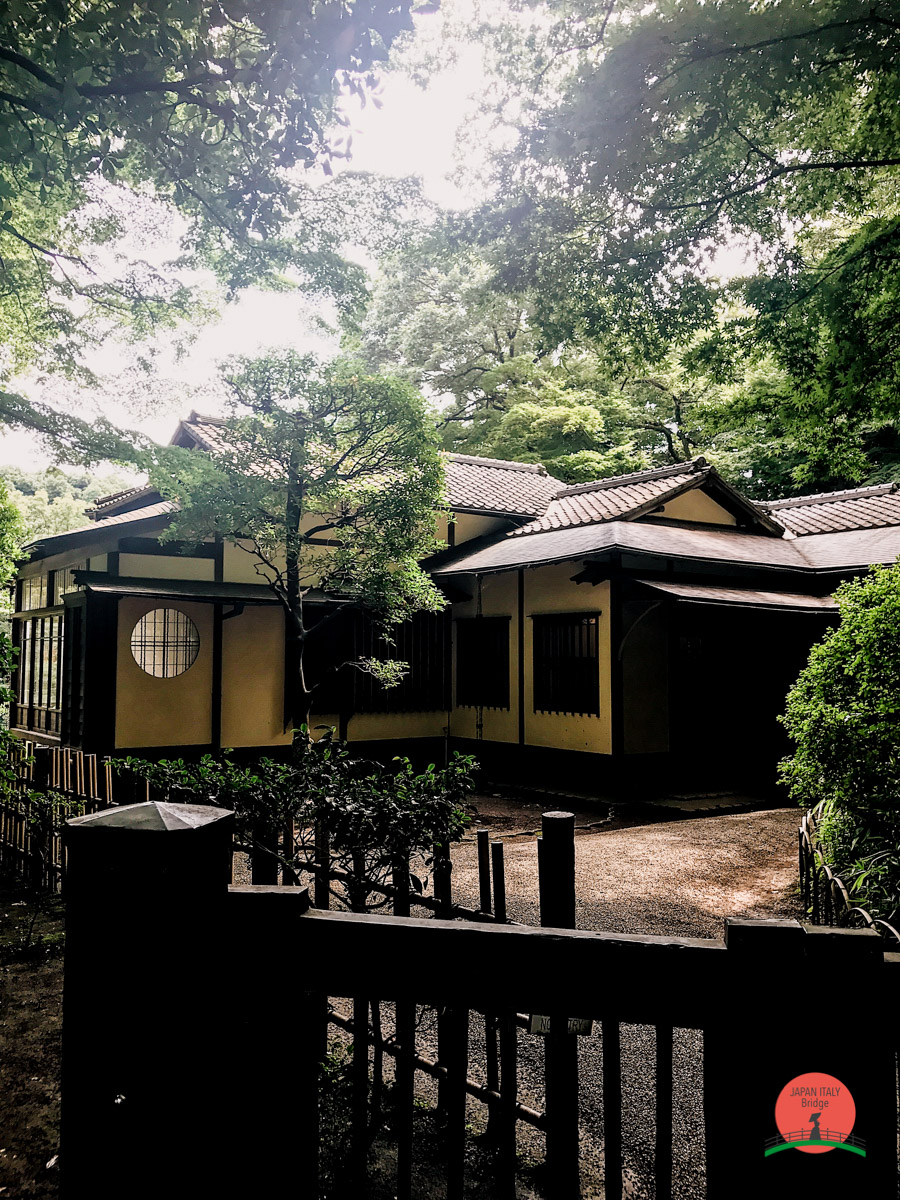
The Meiji Jingu is one of the most popular temples in Japan and at this time of year, just after the Omisoka, it regularly welcomes more than three million visitors for the Hatsumode, the first prayers of the year.
In the northernmost part of the temple-related lands, visitors can find the treasure house of the Meiji Jingu, built a year after the temple was opened. In this place are contained many personal objects related to the Emperor and the Empress, including the carriage that accompanied the emperor to the formal declaration of the Meiji constitution in 1889.


A large area of the southern part of the temple lands is occupied by the Interior Gardens, which require a small entry fee. These gardens are particularly popular in mid-June to admire the blooming of the Iris flowers in all their glory, together with the famous Japanese gruidae birds. And if you have enough patience, you might have the opportunity to see a small flock of these fantastic birds cross the lake, a unique and magical spectacle.
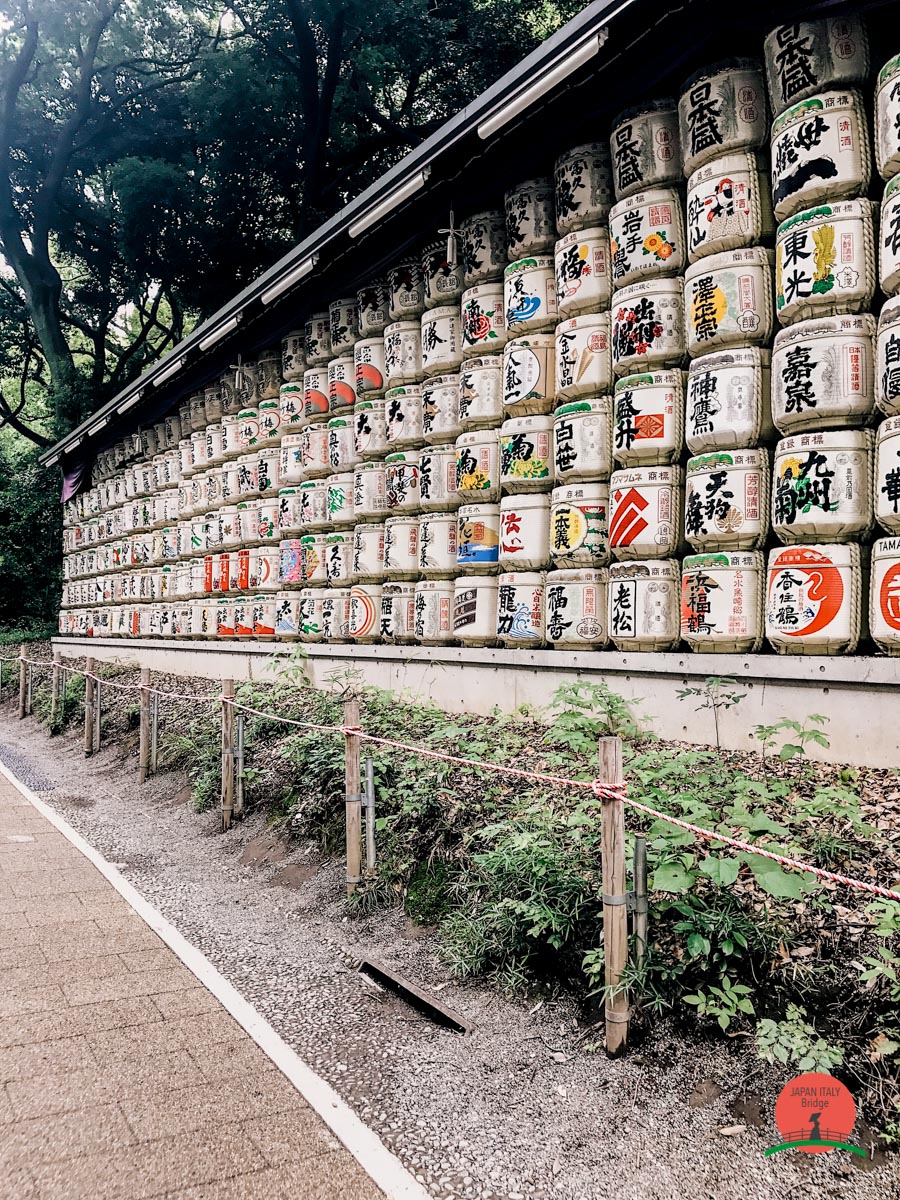
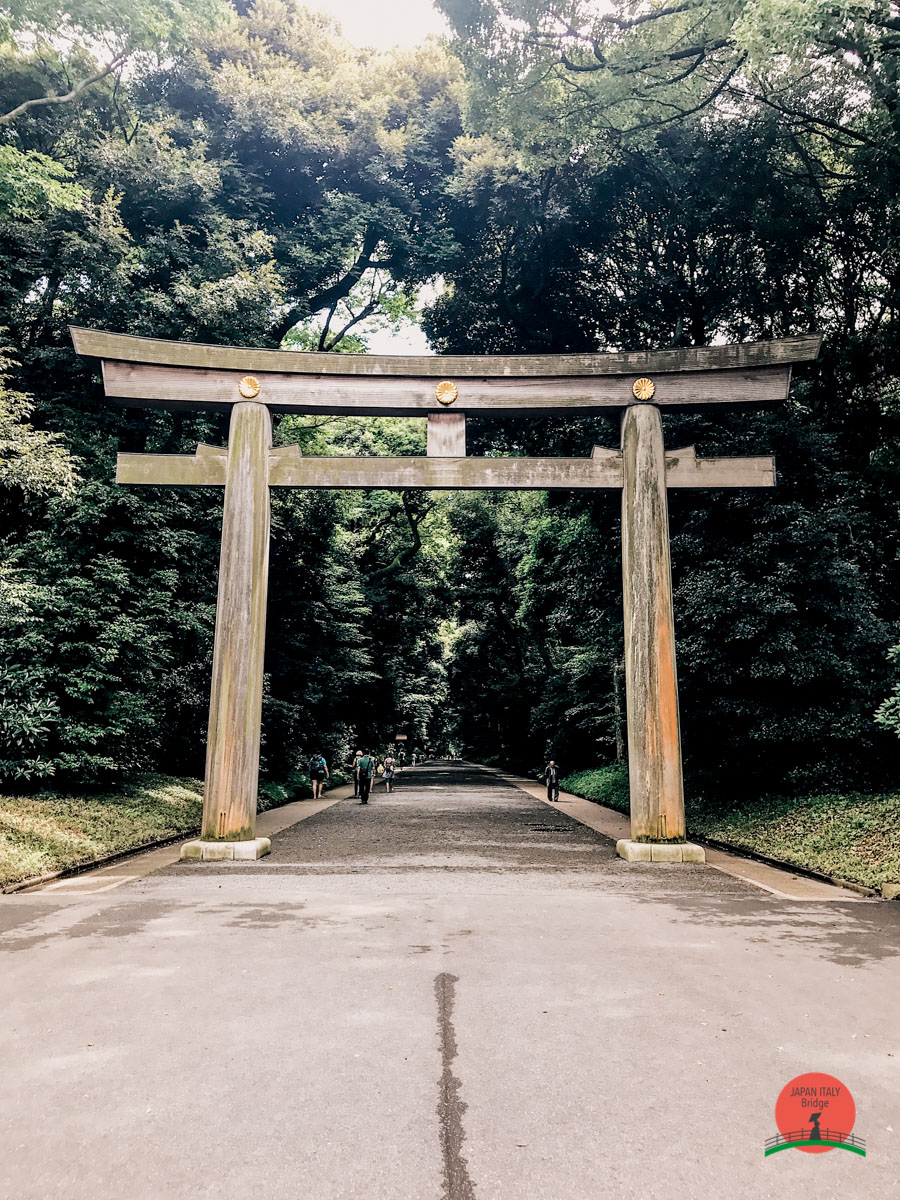
Also, walking along the inner streets of the temple and the park, you can come across what I call "wall of sake", a wall of gigantic sake barrels, a gift for the emperor by all the sakagura of Japan . Opposite this wall, on the other hand, it is possible to find a wall of wine barrels, a gift to the emperor from all the foreign nations.
Also, in preparation for the 100th anniversary in 2020, renovations are taking place for some of the temple buildings, scheduled until October 2019, so if you plan to visit Tokyo in 2020 you can not miss this goal, between an Olympic race and the other!
Japan Travel: The imperial Palace & Gardens

photo credit: Google Images
I’ve been to Tokyo a few times now and one of my favourite spot in the whole city are the Imperial East Gardens in the Chiyoda area. Whenever I’m in the city, I always find a moment (sometimes even more than one) to visit this amazing place, a green heart in Tokyo, full of history and tradition but surrounded by the modernity of this frantic city.
The Tokyo Imperial Palace (皇居 Kōkyo, literally "Imperial Residence") is the primary residence of the Emperor of Japan. With its large parks it is located in the heart of the Chiyoda ward and contains buildings including the main palace (宮殿 Kyūden), the private residences of the Imperial Family, an archive, museums and administrative offices.
The current palace is built on the site of the old Edo Castle built by the shogun Tokugawa Ieyasu and the total area including the gardens is 1.15 square kilometres.
The history
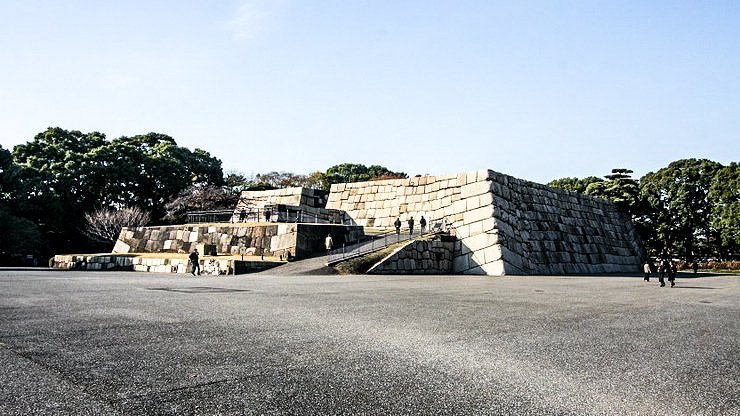

photo credit: japan-guide.com
Edo castle
Built by Tokugawa Ieyasu and assigned it to be the residence of the Tokugawa family, after the end of the shogunate and the Meiji Restoration, the Emperor left the Kyoto Imperial palace and moved to Edo Castle. This became his new residence and it was renamed to Tōkei Castle (東京城 Tōkei-jō), at this time, Tōkyō had also been called Tōkei.
On 5th May 1873, the Nishinomaru Palace (formerly the shōgun's residence) was destroyed by a fire, and the new imperial Palace Castle (宮城 Kyūjō) was constructed on the site in 1888.
The non-profit organisation "Rebuilding Edo-jo Association" (NPO法人 江戸城再建) founded in 2004 has the aim of a historically correct reconstruction of at least the main donjon. This group plans to collect donations and signatures on a petition in support of rebuilding the tower of the old castle so that the capital city can have a symbolic building.


photo credit: Wikipedia, thetraveltester.com
The Old palace
In the Meiji era, most structures from the Edo Castle disappeared. Some were cleared to make way for other buildings while others were destroyed by earthquakes and fire.
In this case, the wooden double bridges (二重橋 Nijūbashi) over the moat were replaced with stone and iron bridges while the buildings of the Imperial Palace constructed in the Meiji era were made of wood.
When you first face the Imperial Palace you are suddenly transported into the classical and traditional Japanese architecture, but if you have the chance to walk those halls you’ll discover that on the inside, the palace is a mixture of then-fashionable Japanese and European elements. Western chairs, tables and heavy curtains furnish the spaces, the floors of the public rooms have parquets or carpets while the residential spaces us traditional tatami mats.
Guests were received in the main audience hall, which was the central part of the palace. Its floor space was more than 223 tsubo (approximately 737.25 m2 - 7,935.7 sq ft) and the interior the ceiling was in traditional Japanese-Style, while the floor was made out of parquet. For the roof, a style similar to the Kyoto Imperial Palace was maintained, however it was covered with fireproof coppered plates rather than the traditional Japanese cypress shingles.
More concrete buildings were added in the late Taishō and early Shōwa period, such as the headquarters of the Imperial Household Ministry and the Privy Council.
During the Second World War, on the night of 25th May 1945, most structures of the Imperial Palace were destroyed in the Allied firebombing raid on Tokyo. Due to this, a new main palace hall (宮殿 Kyūden) and residences were constructed on the western portion of the site in the 1960s and this area was renamed Imperial Residence (皇居 Kōkyo) while the eastern part was renamed East Garden (東御苑 Higashi-Gyoen) and became a public park in 1968.
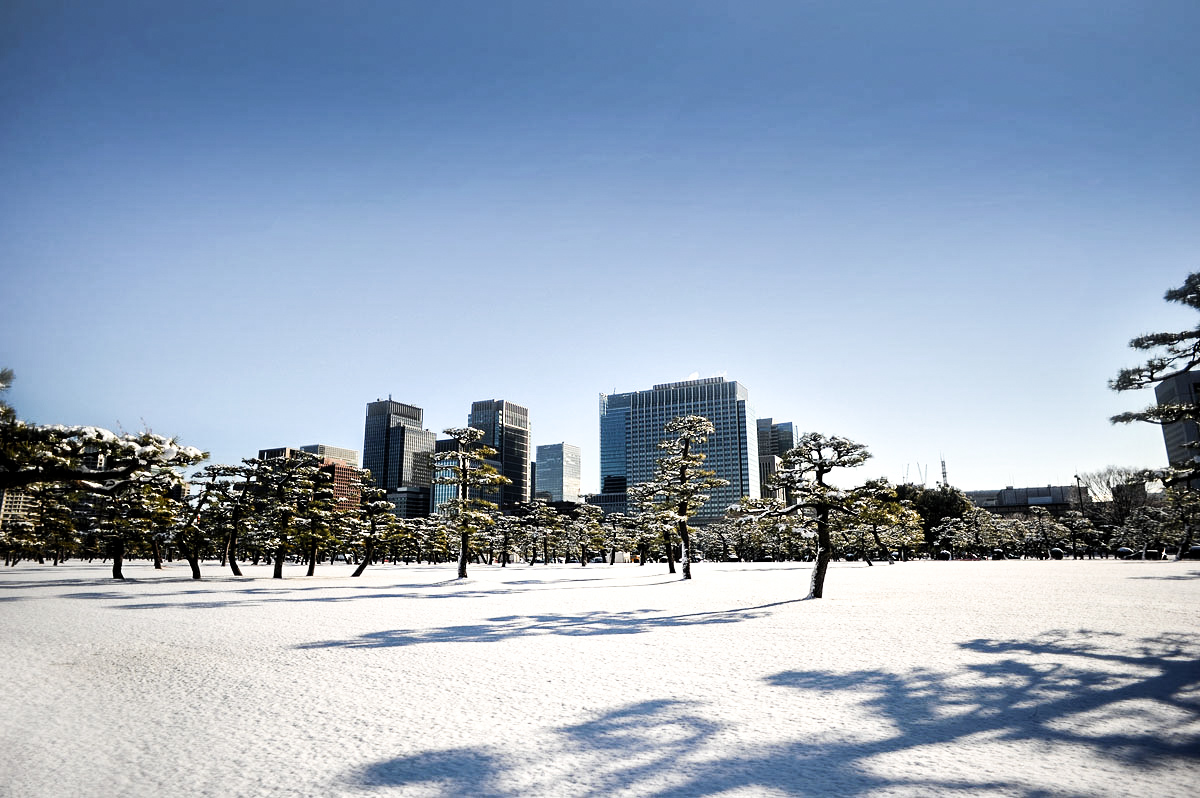
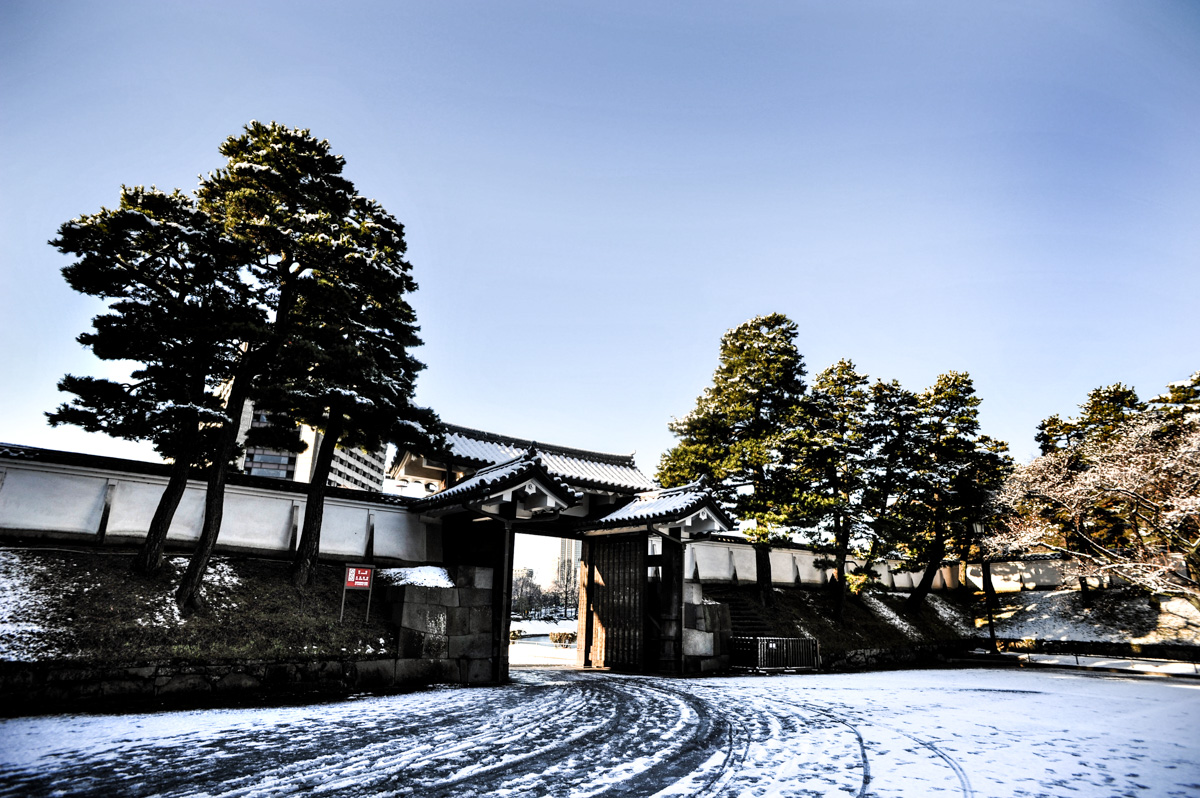
photo credit: tokyobling.wordpress.com
The Imperial Palace today
After surviving defining moment in history, the modern palace Kyūden (宮殿) was designed for various imperial court functions and reception is located in the old Nishinomaru section of the palace grounds.
As of today, the residence of the current Emperor and empress is located in the Fukiage Gardens and it is now on a much more modest scale, compared to what originally was.
Except for Imperial Household Agency and the East Gardens, the palace is generally closed to the public, except for reserved guided tours from Tuesdays to Saturdays. Each New Year (January 2) and Emperor's Birthday, the public is permitted to enter through the Nakamon (inner gate) where they gather in the Kyuden Totei Plaza in front of the Chowaden Hall. On this occasion, the Imperial Family appears on the balcony before the crowd and the Emperor normally gives a short speech greeting and thanking the visitors and wishing them good health and blessings.
The Gardens
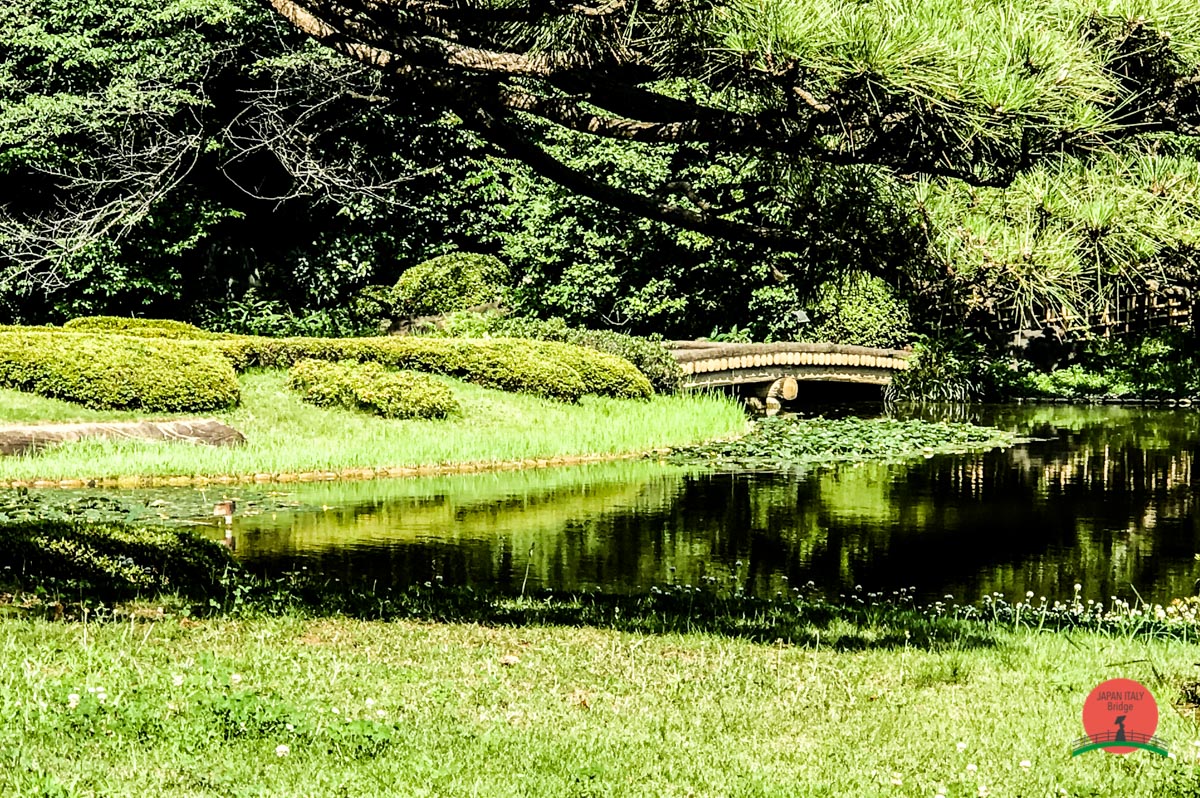

Fukiage Garden
This is probably the oldest garden of the complex. The Fukiage Garden has carried the name since the Edo period and this is where the Imperial Family lives today.
The Fukiage Ōmiya Palace (吹上大宮御所 Fukiage Ōmiya-gosho) in the northern section was originally the residence of Emperor Showa and Empress Kōjun and was called the Fukiage Palace. After the Emperor's death in 1989, the palace was renamed the Fukiage Ōmiya Palace and was the residence of the Empress Dowager until her death in 2000.
Here you can also find the Three Palace Sanctuaries (宮中三殿 Kyūchū-sanden), parts of the Imperial Regalia of Japan and the sanctuary plays a religious role in imperial enthronements and weddings.


photo credit: Wikipedia
Tōkagakudō (Music Hall)
The Tōkagakudō (桃華楽堂, Peach Blossom Music Hall) is located to the east of the former main donjon of Edo Castle in the Honmaru and it was built was built in commemoration of the 60th birthday of Empress Kōjun on 6 March 1963. The ferro-concrete building covers a total area of 1,254 m2 (13,500 sq ft) and each of its eight outer walls is decorated with differently designed mosaic tiles.
Ninomaru Garden
If you want to have a quick look of the whole Japan vegetation, this is where you should be since symbolic trees representing each prefecture are planted in the northwestern corner of Ninomaru enceinte. Such trees have been donated from each prefecture and there are total of 260, covering 30 varieties.

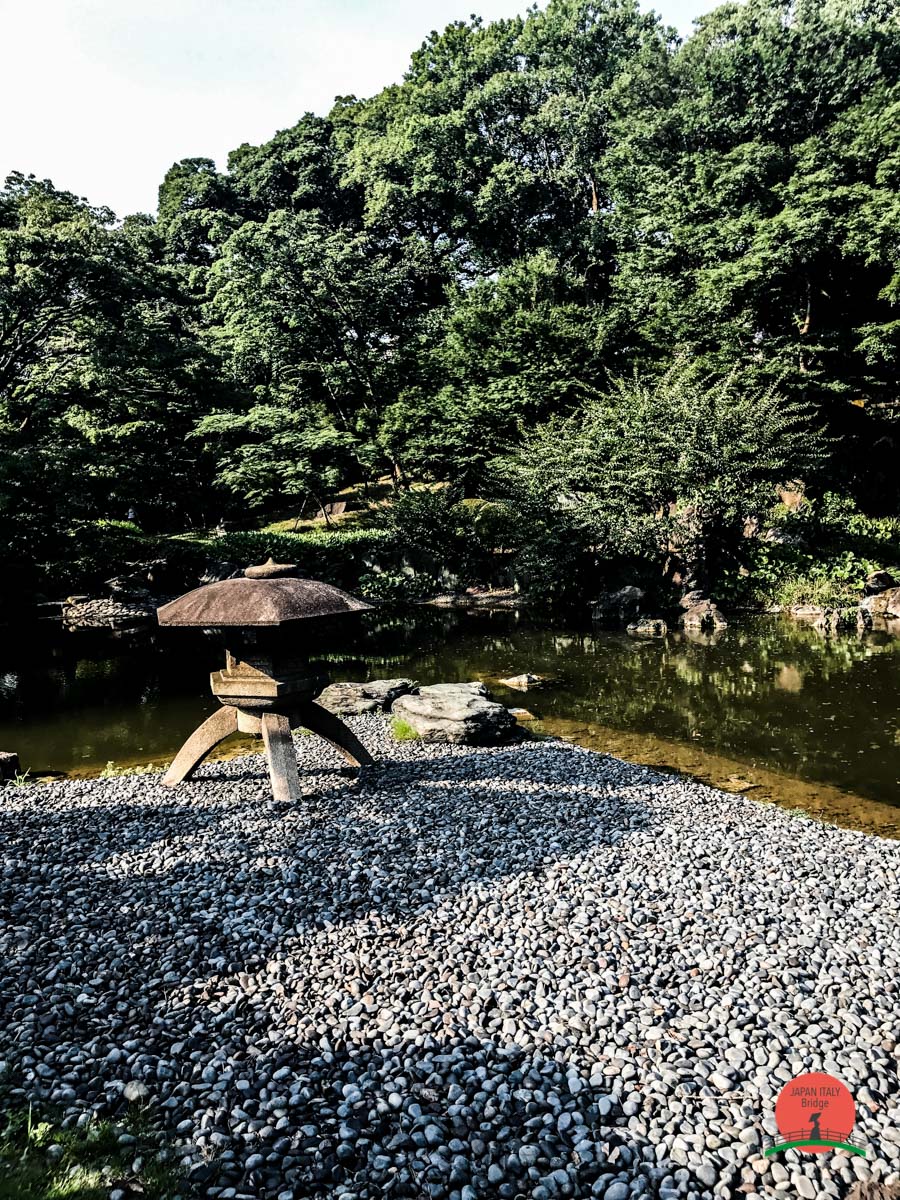
Kitanomaru
Located in the northern part of the enceinte of Edo Castle, this public park is famous for being the house of the Nippon Budokan Hall, one of the biggest sites for concerts, sports event and more.
Here you can also find a bronze monument dedicated to Prince Kitashirakawa Yoshihisa (北白川宮能久親王 Kitashirakawa-no-miya Yoshihisa-shinnō).
East Garden
And last but not least, the East Gardens the most famous of this whole complex. This is where most of the administrative buildings for the palace are located and encompasses the former Honmaru and Ninomaru areas of Edo Castle, a total of 210,000 m2 (2,300,000 sq ft). Located on the grounds of the East Garden is the Imperial Tokagakudo Music Hall, the Music Department of the Board of Ceremonies of the Imperial Household, the Archives and Mausolea Department Imperial Household Agency, structures for the guards such as the Saineikan dojo, and the Museum of the Imperial Collections.
Construction work began in 1961 with a new pond in the Ninomaru, as well as the repair and restoration of various keeps and structures from the Edo period. On 30 May 1963, the area was declared by the Japanese government a "Special Historic Relic" under the Cultural Properties Protection Law.


This is actually my personal favourite and whenever I come to Tokyo, I always try to spend one afternoon here. It’s one of the most visited landmarks of the city, that’s true, but in spite of all the tourists walking around, there is this magical atmosphere of tranquillity in the air and it’s the perfect spot to just sit, read a book, write on your notebook all the adventures you’ve had in this amazing city and just take in all the history this place has seen.
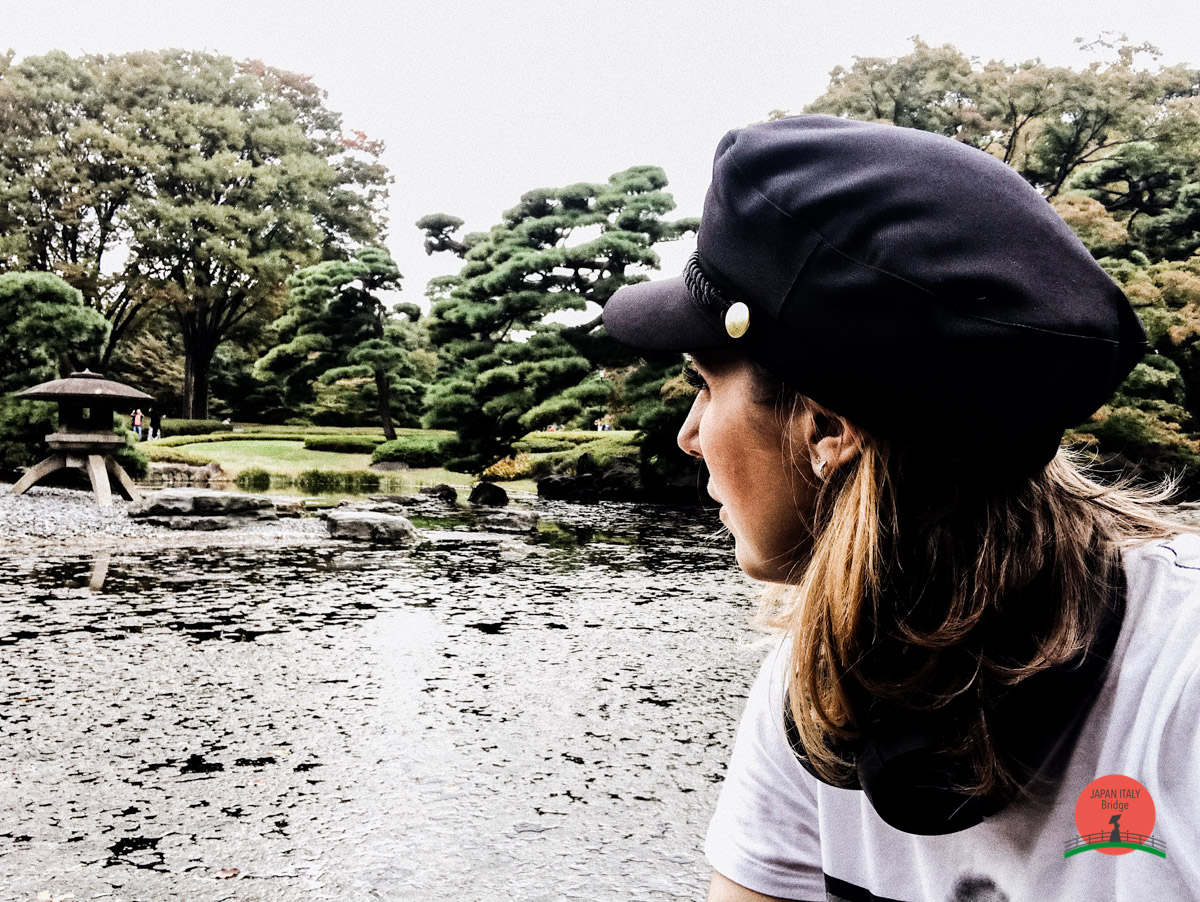
Access
The Otemon entrance to the East Gardens is a short walk from Otemachi Station on the Chiyoda, Tozai, Marunouchi, Hanzomon and Mita Subway Lines. It can also be reached in a 10-15 minute walk from Tokyo Station.
Opening Hours
9:00 to 16:30 (until 17:00 from mid April through August; until 16:00 from November through February). Admission ends 30 minutes before closing.
Closed
Mondays, Fridays, New Year (Dec 28 to Jan 3) and some special occasions. If Monday or Friday is a national holiday, the gardens are closed on the following day instead.
Admission
Free










